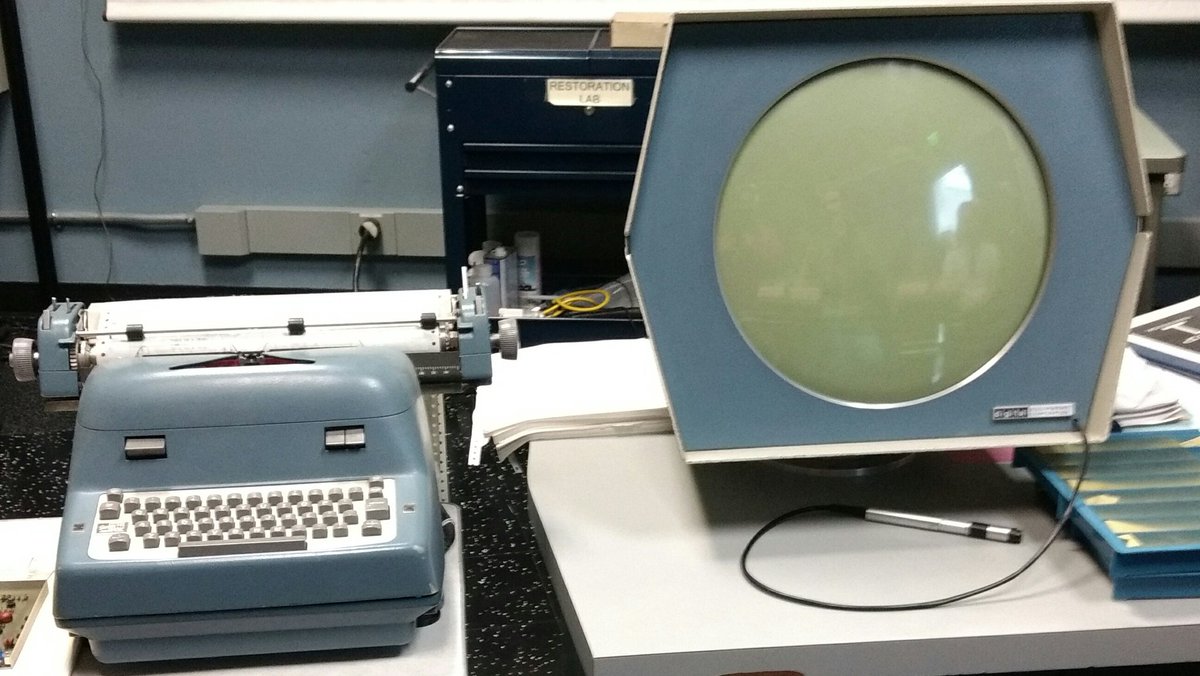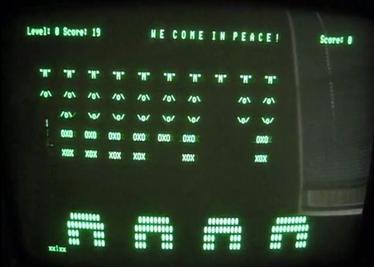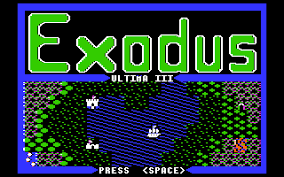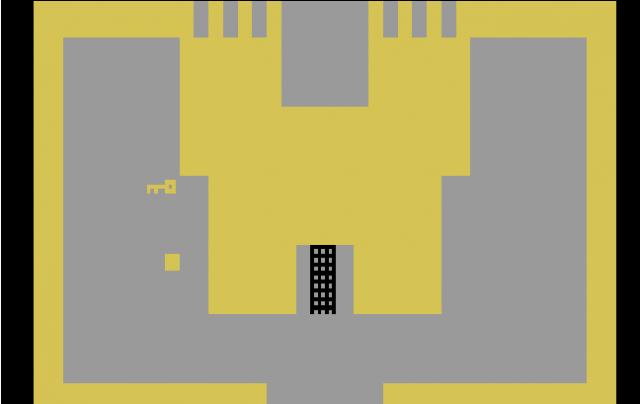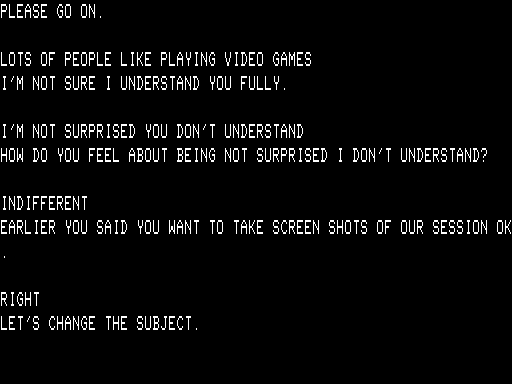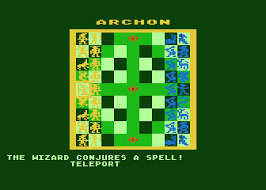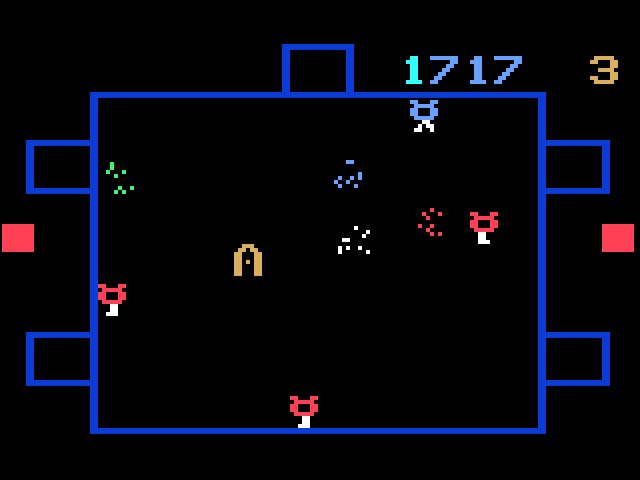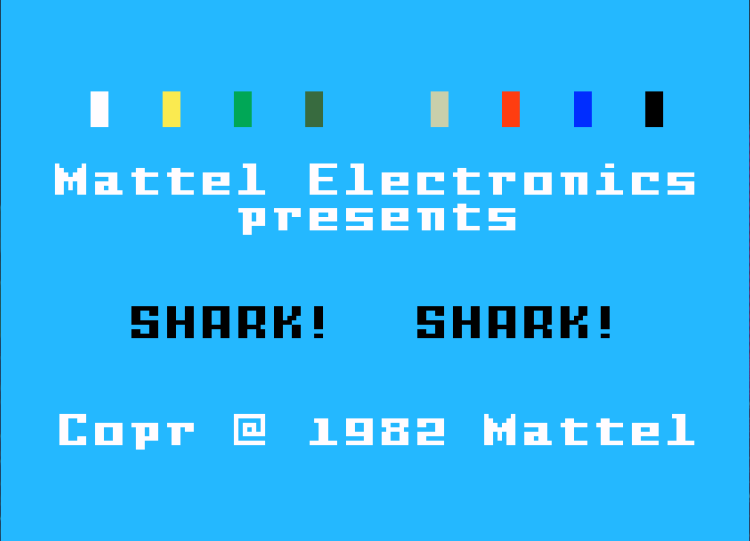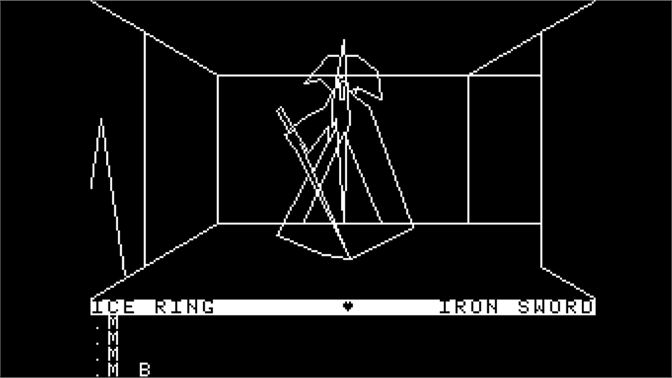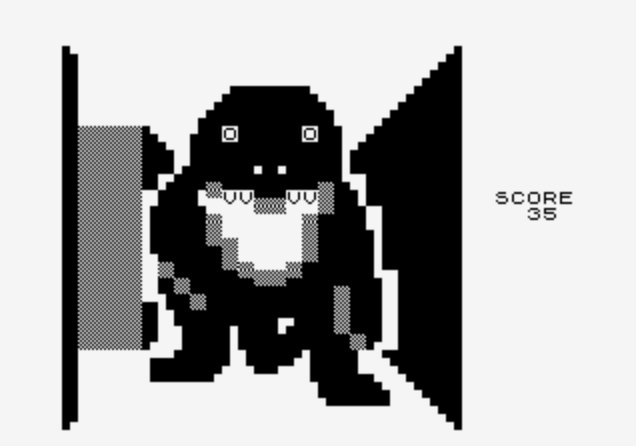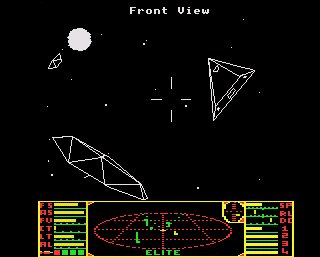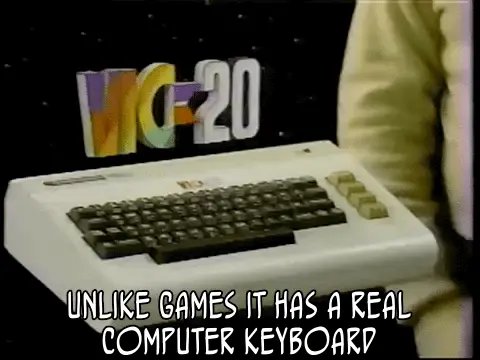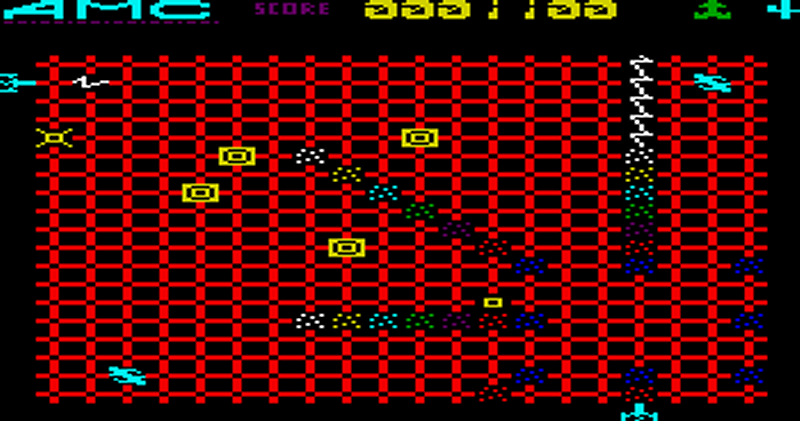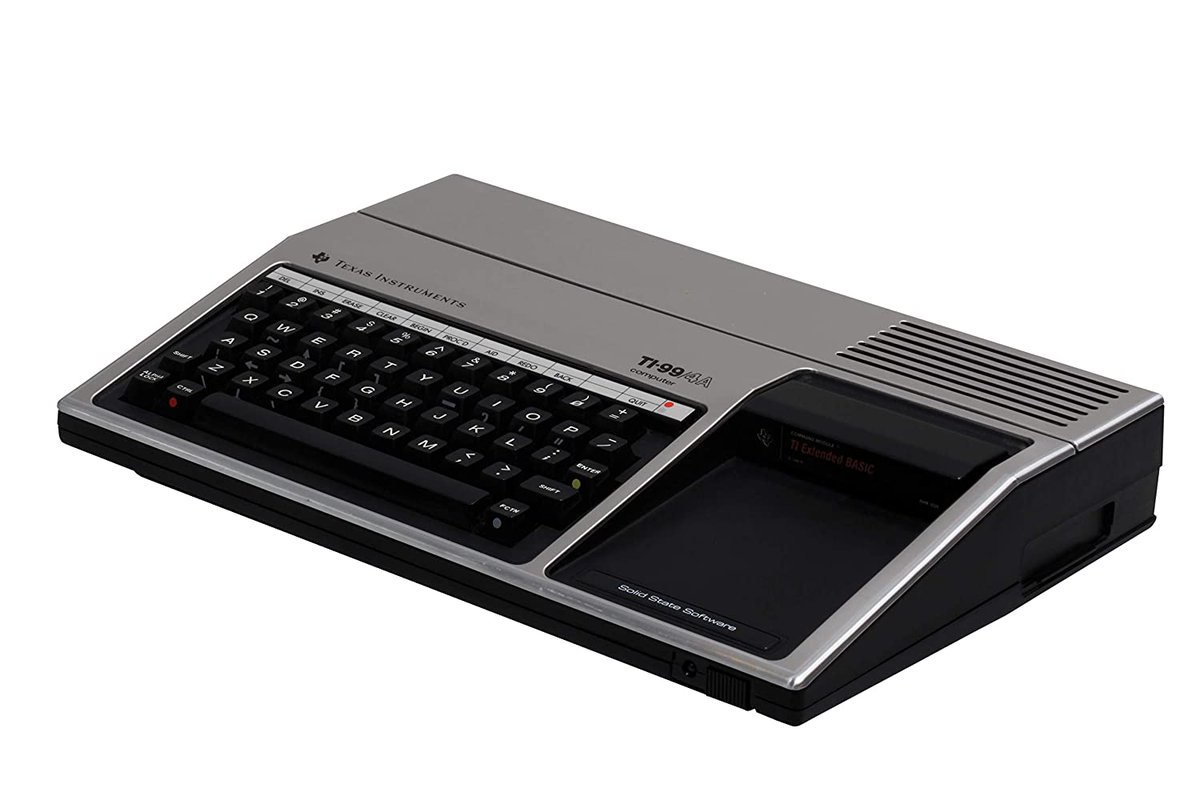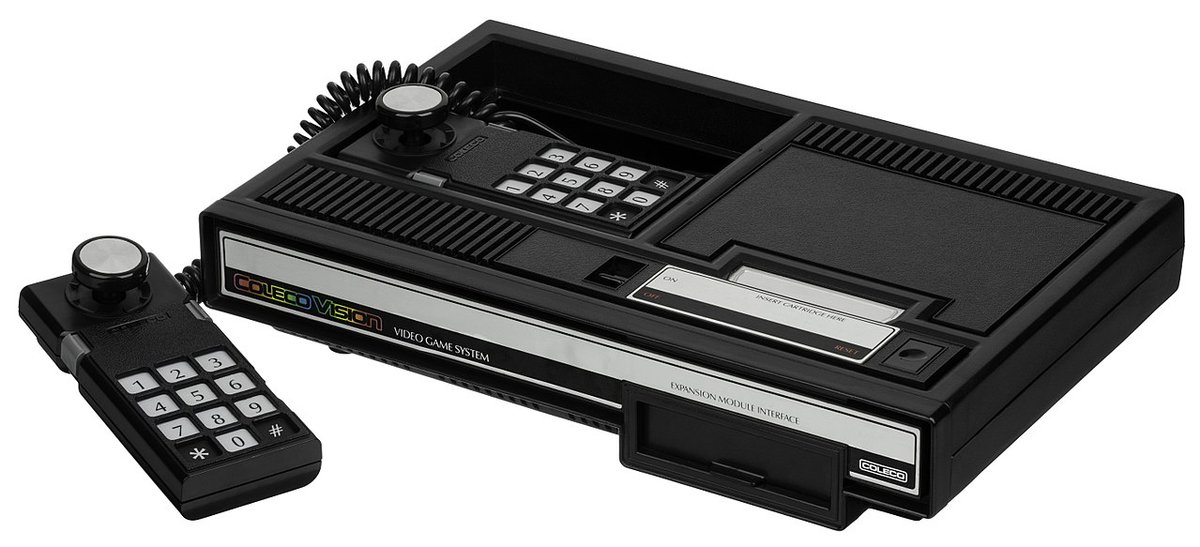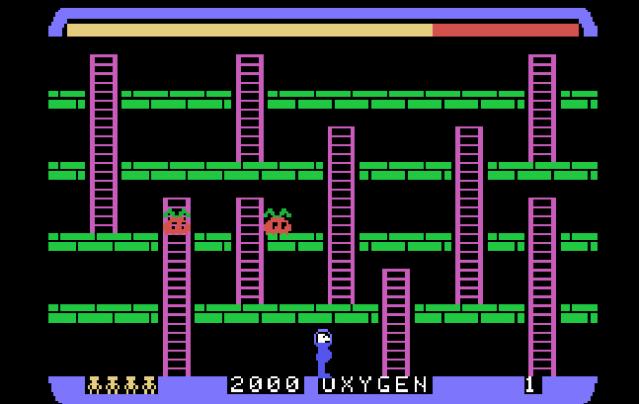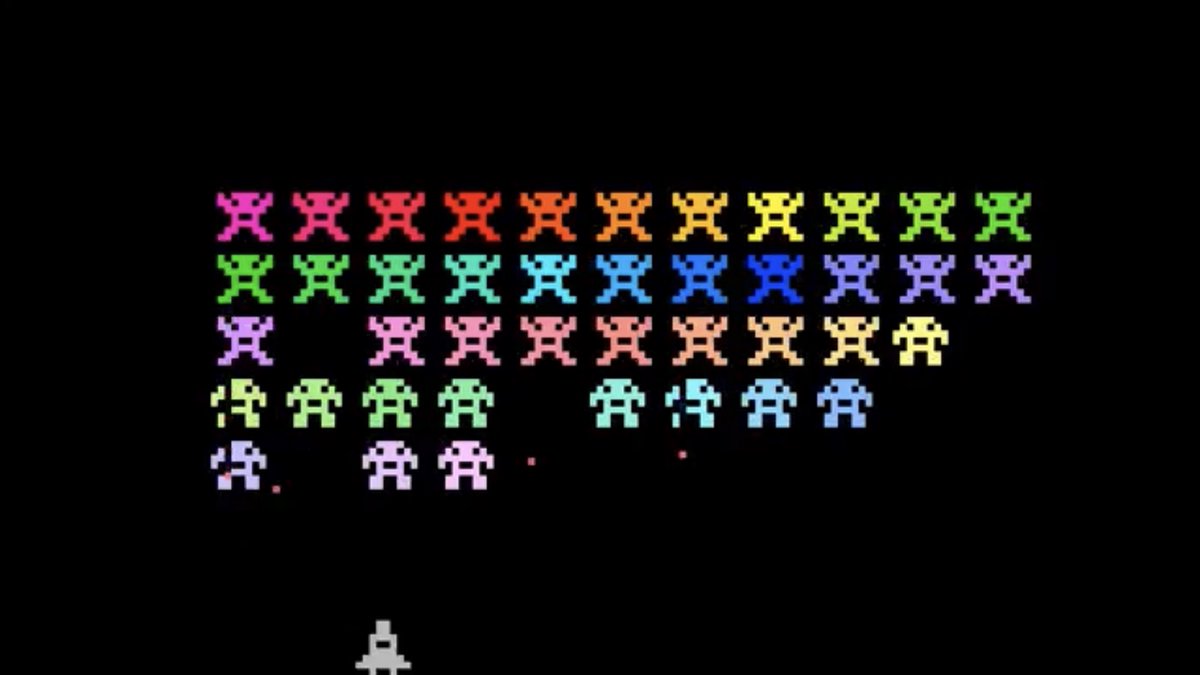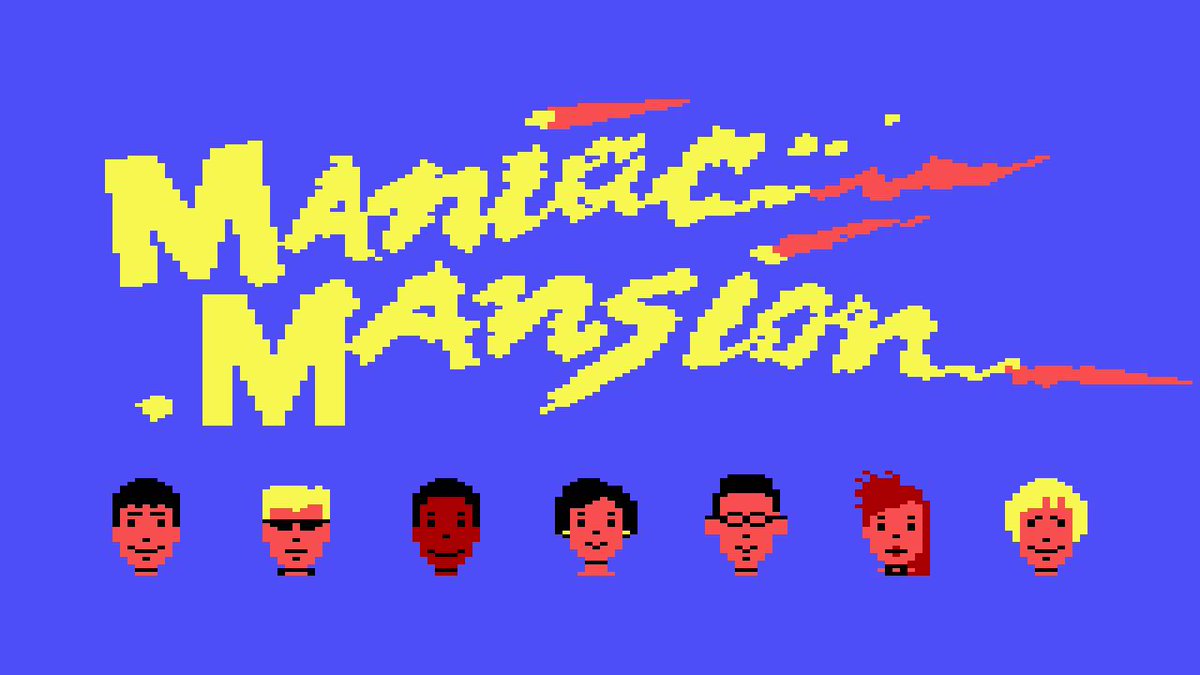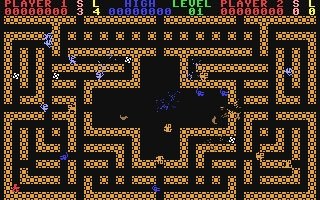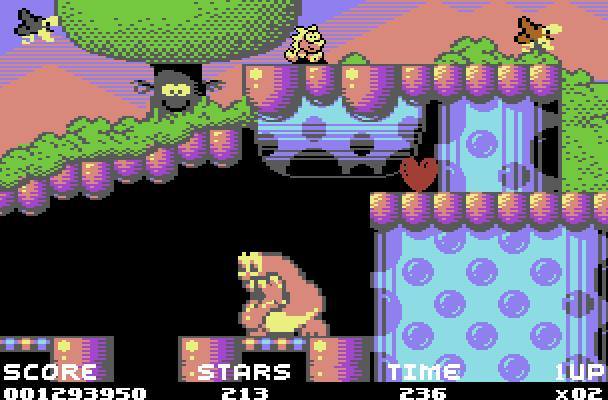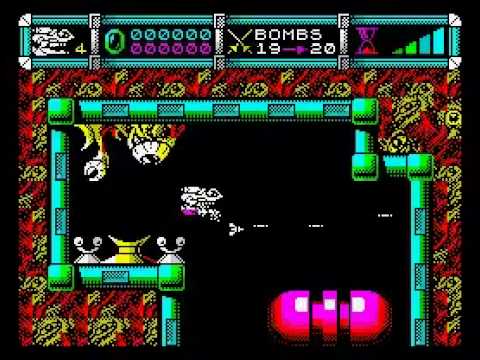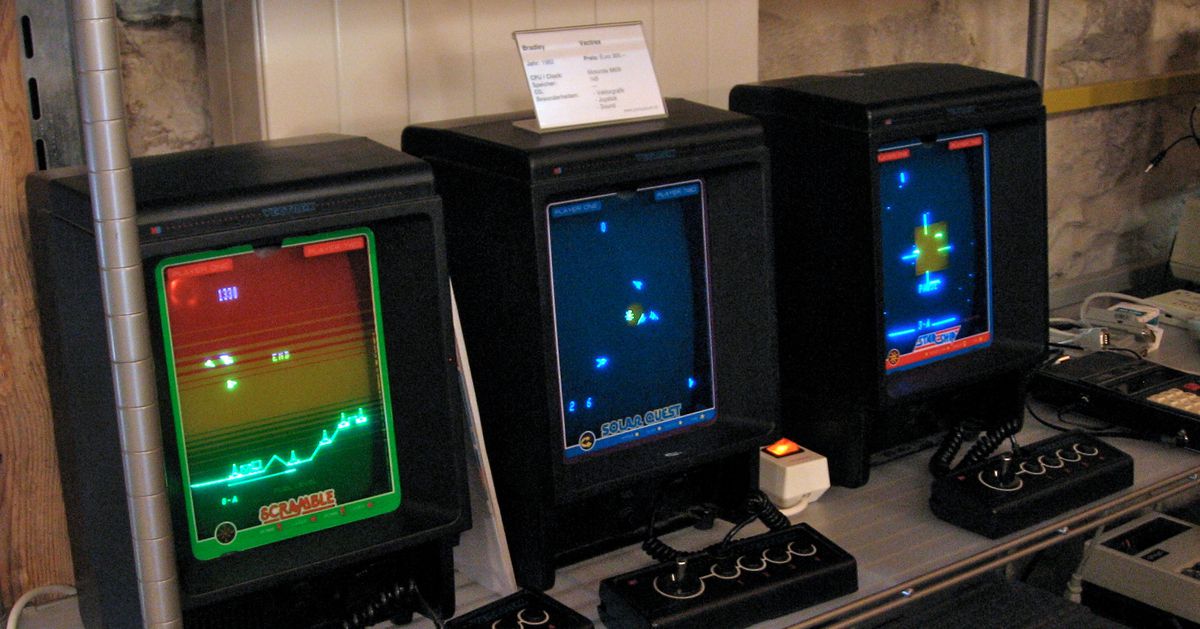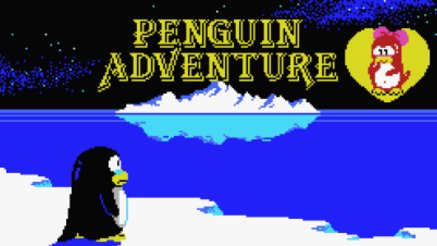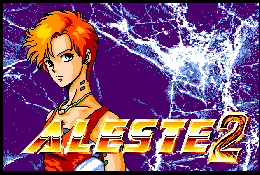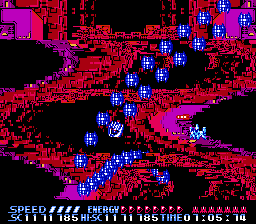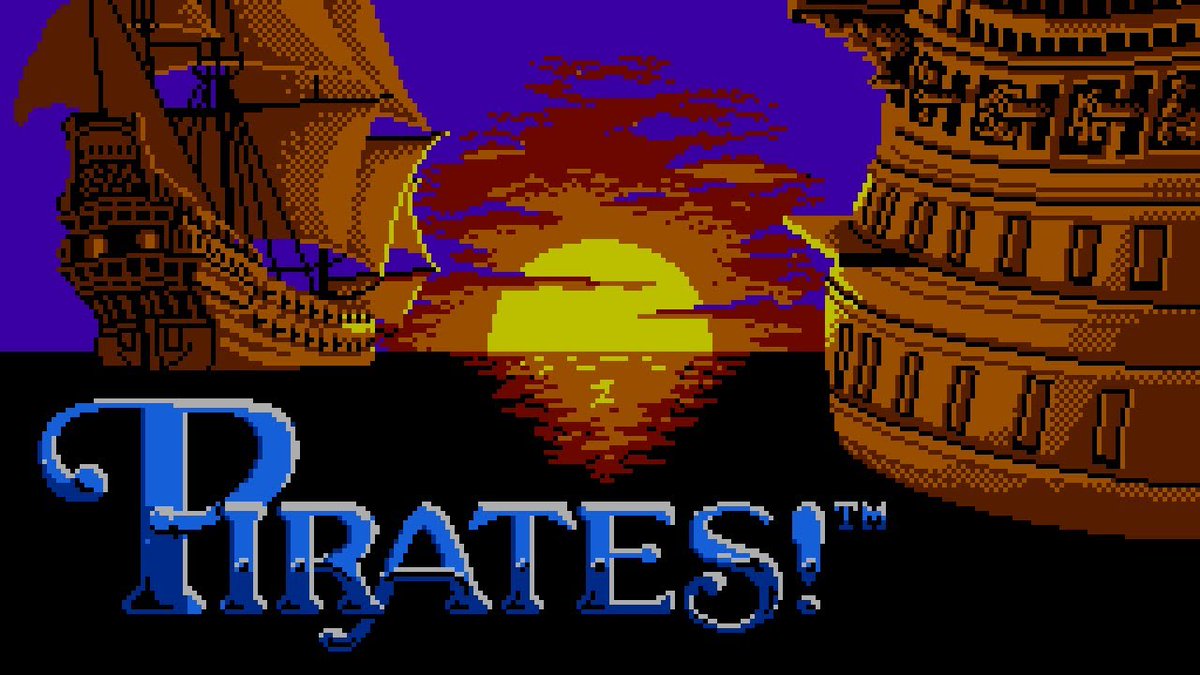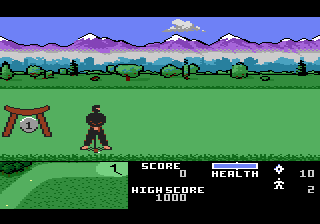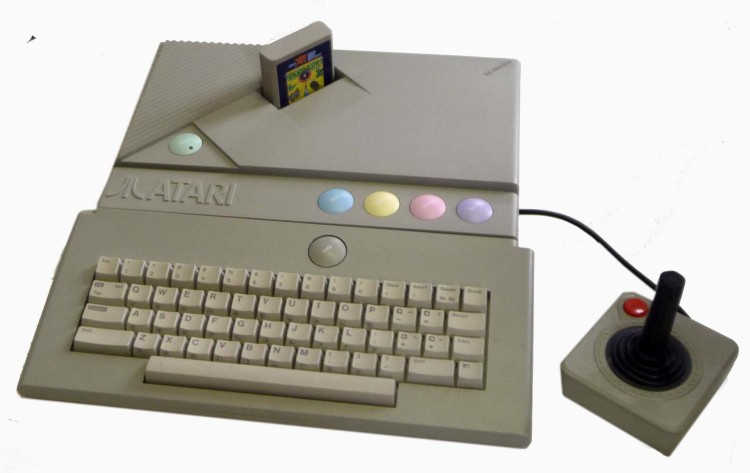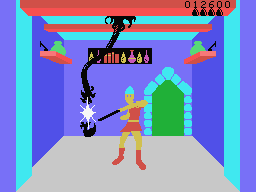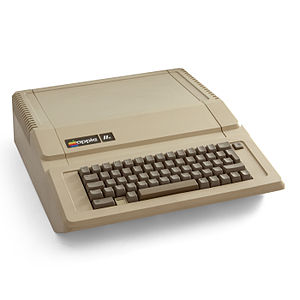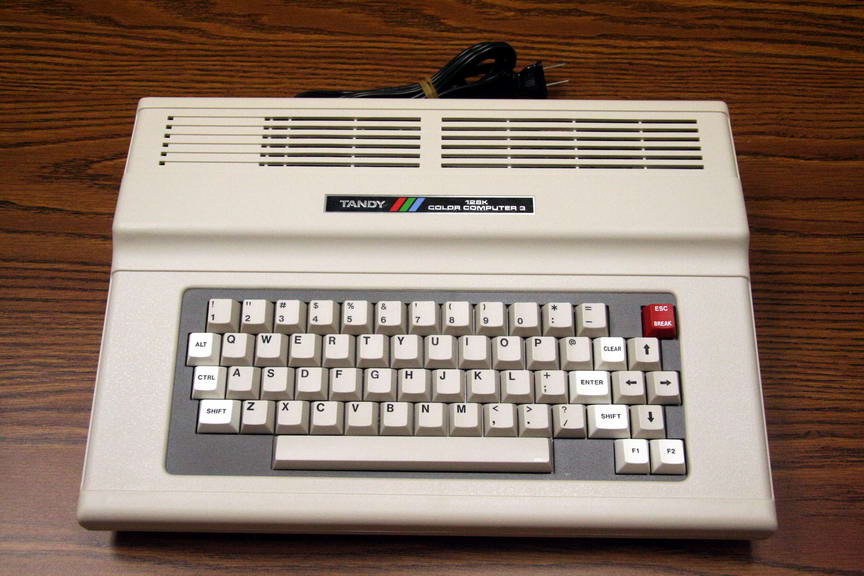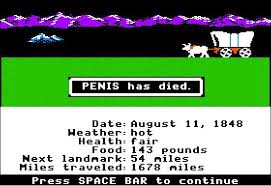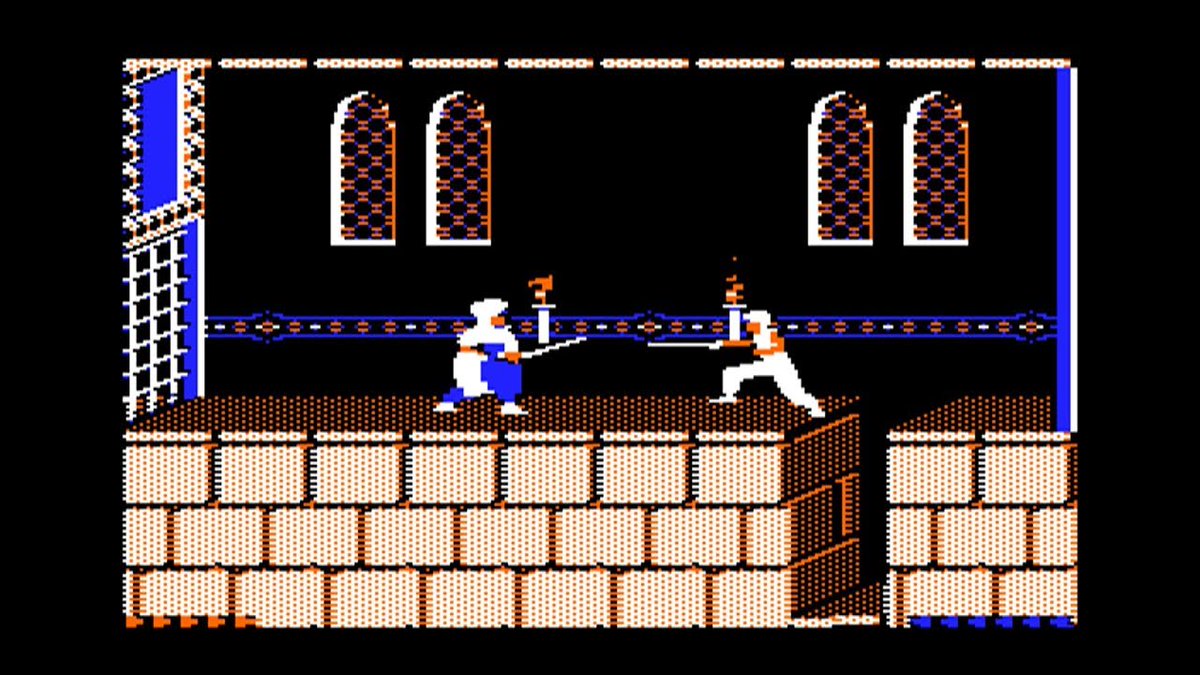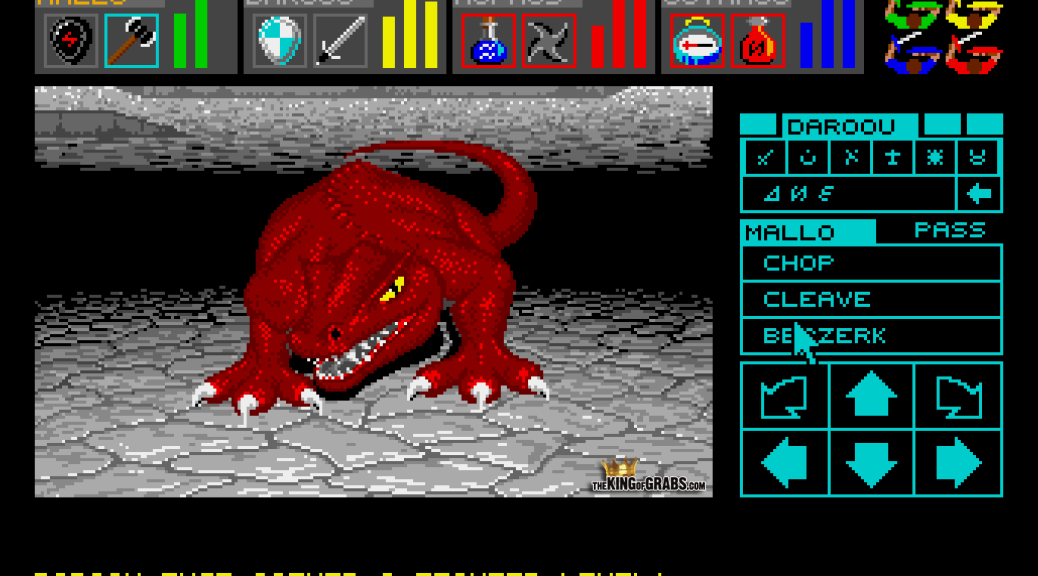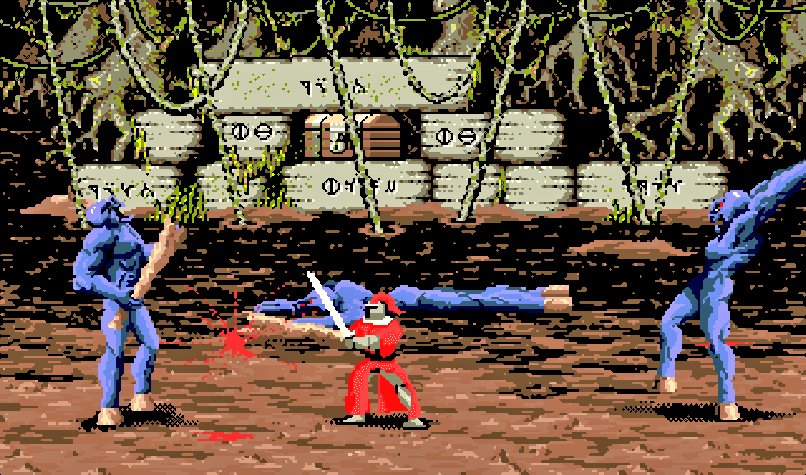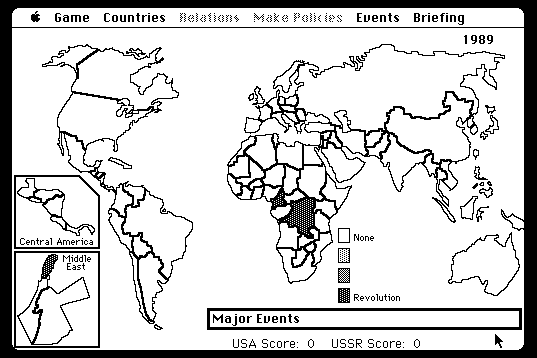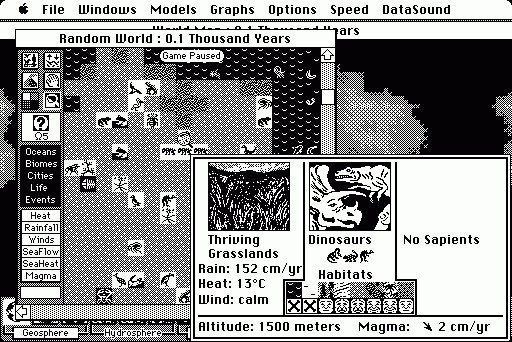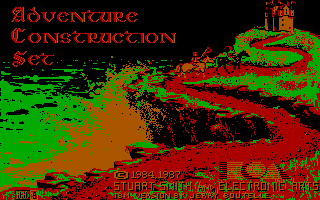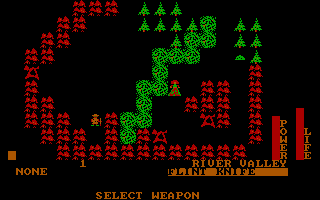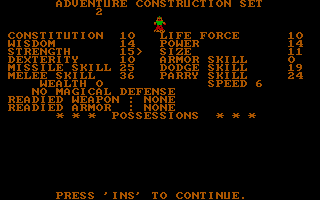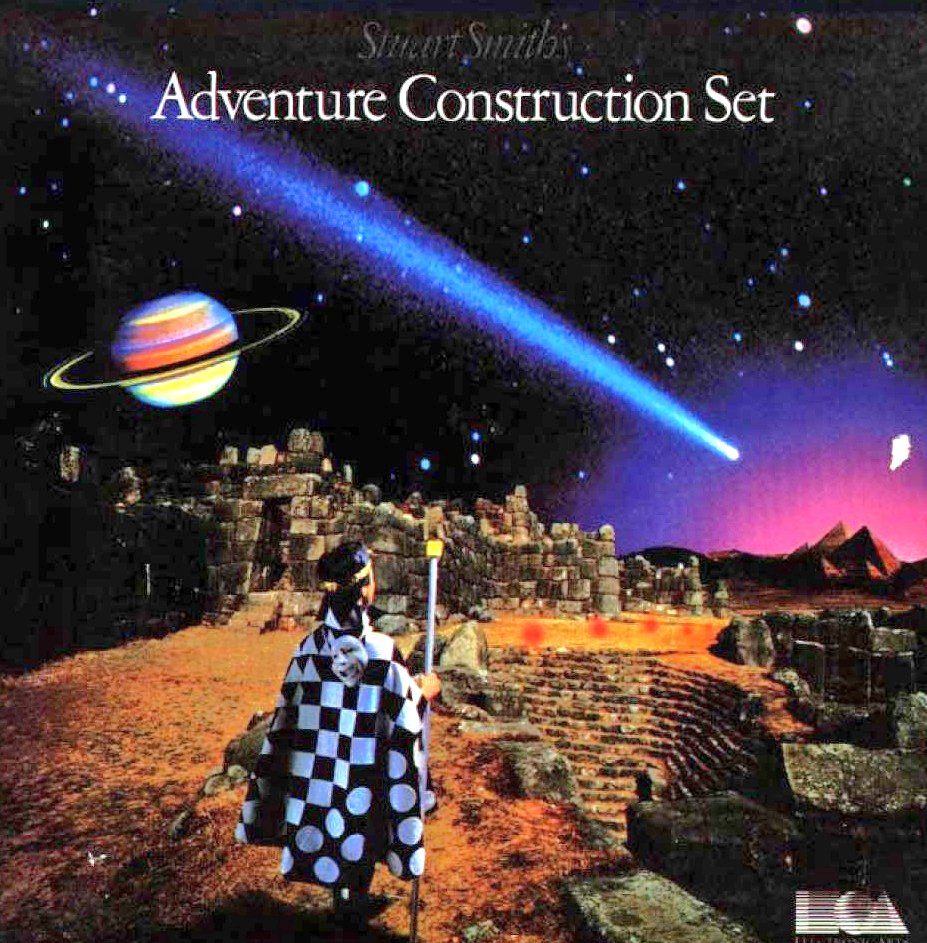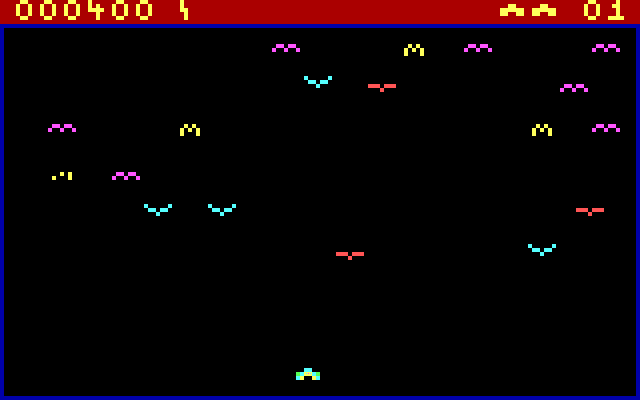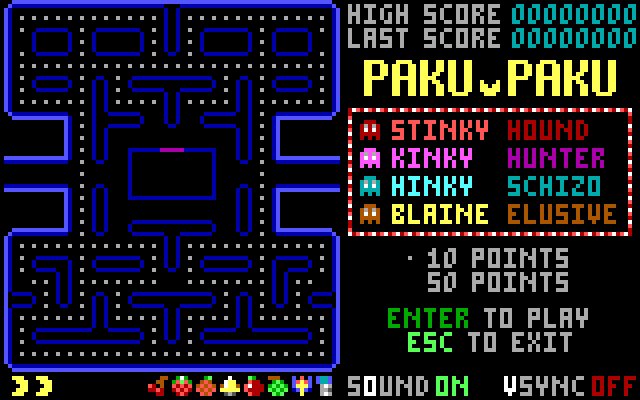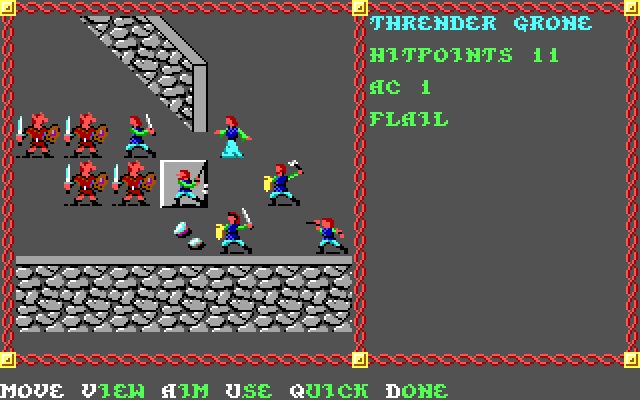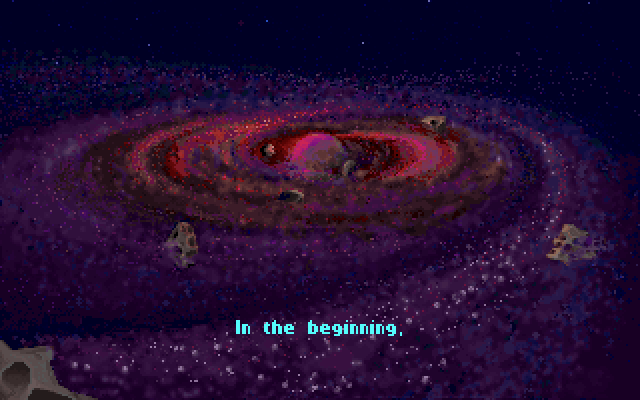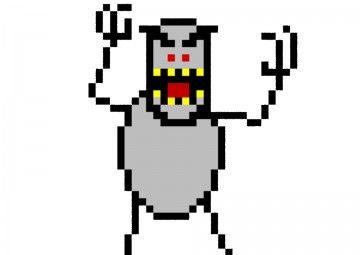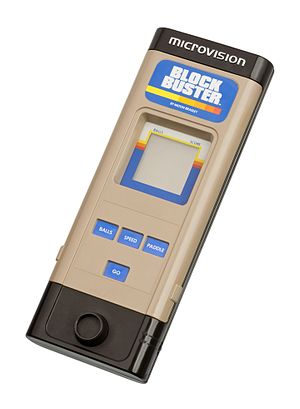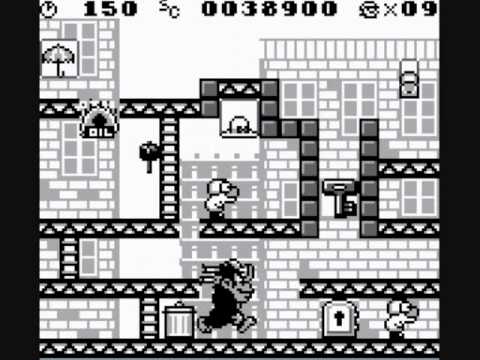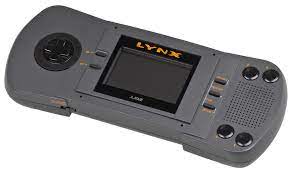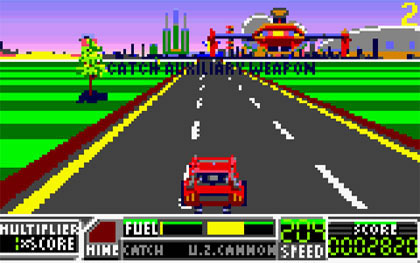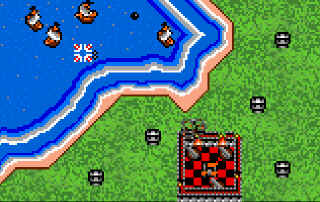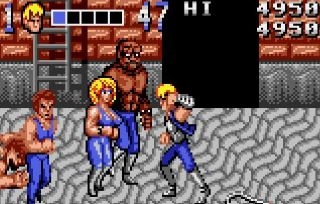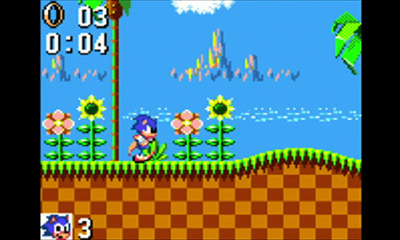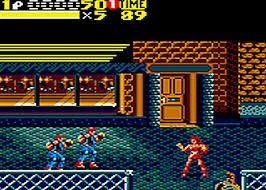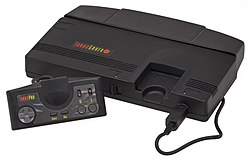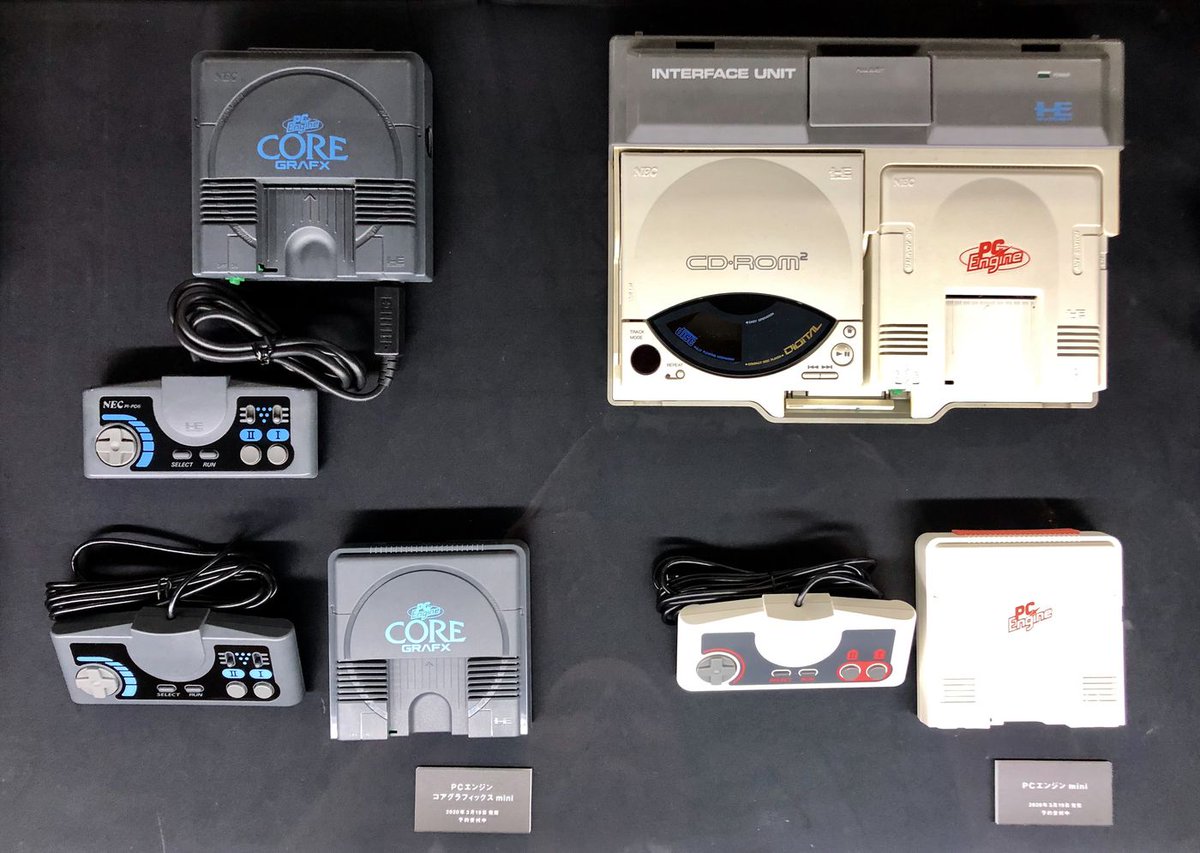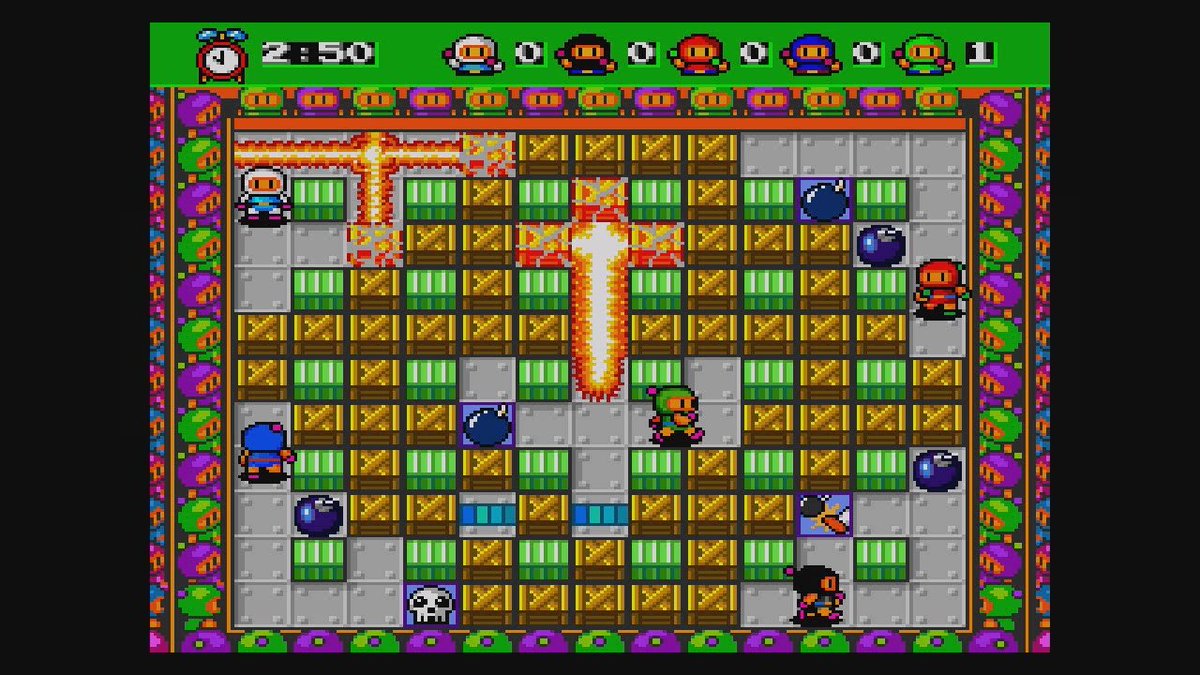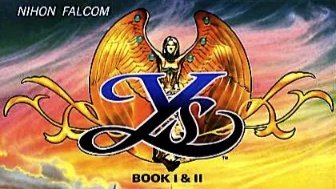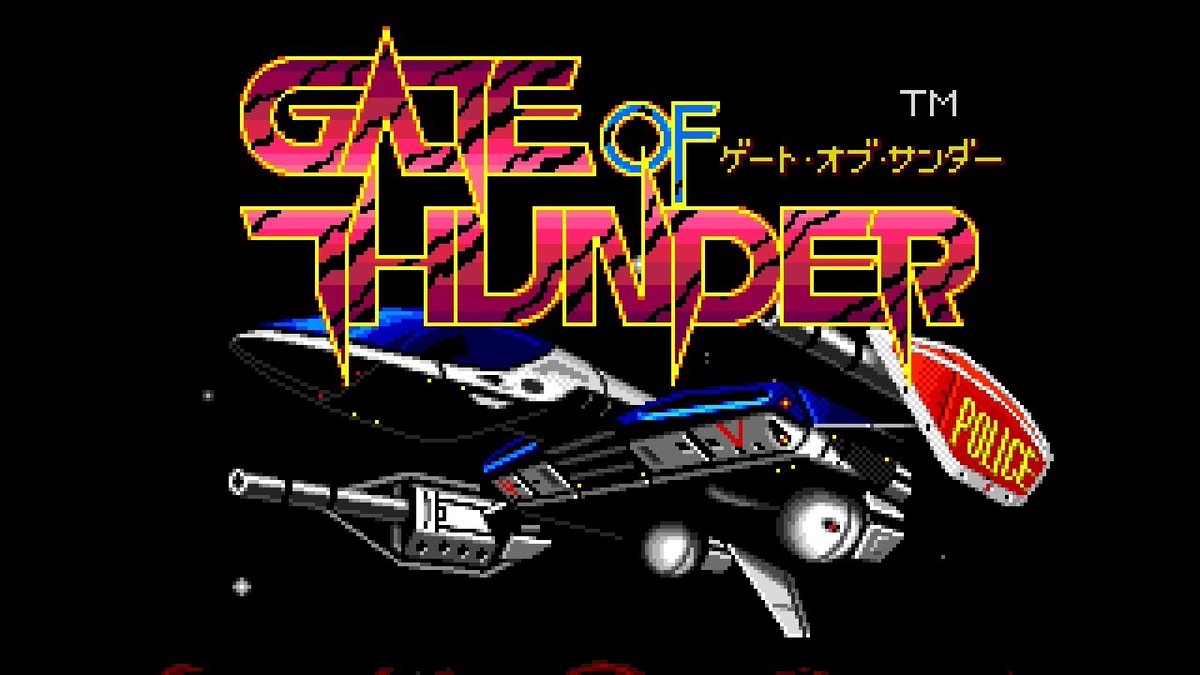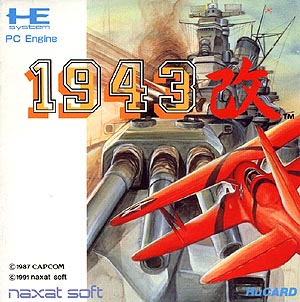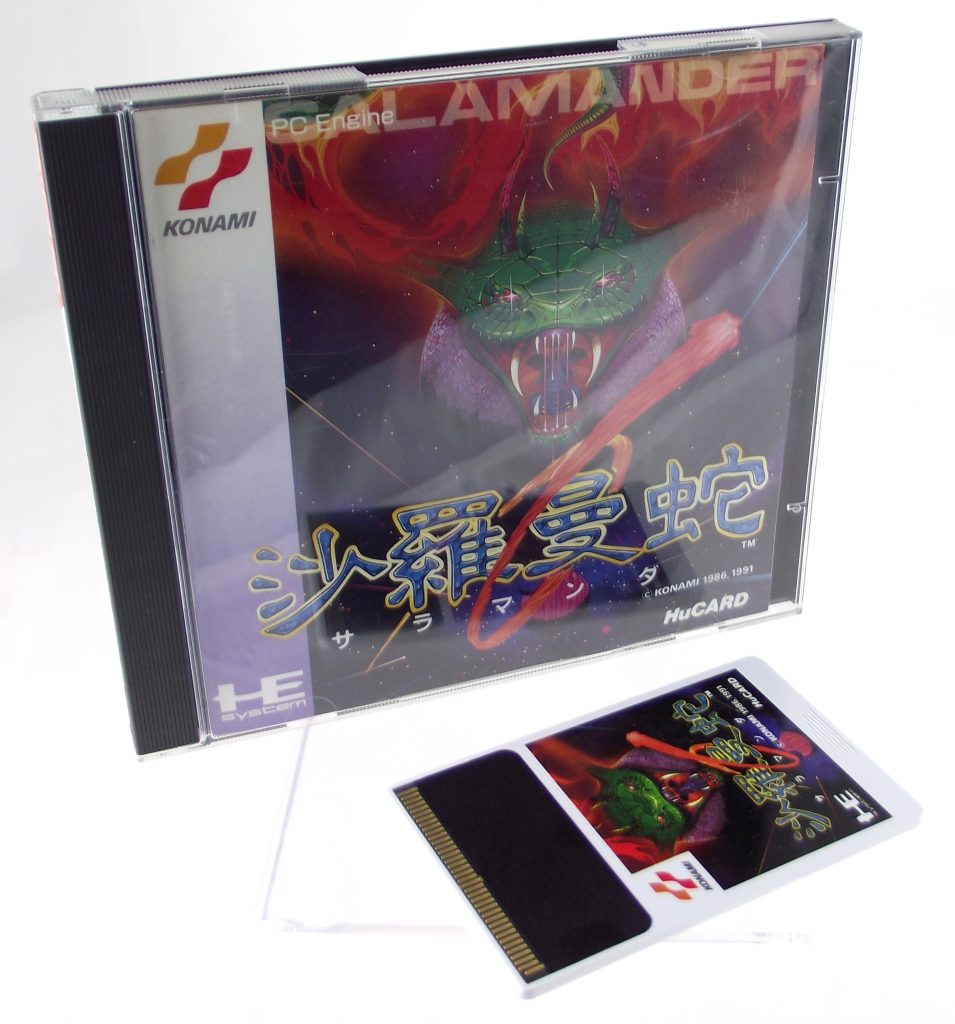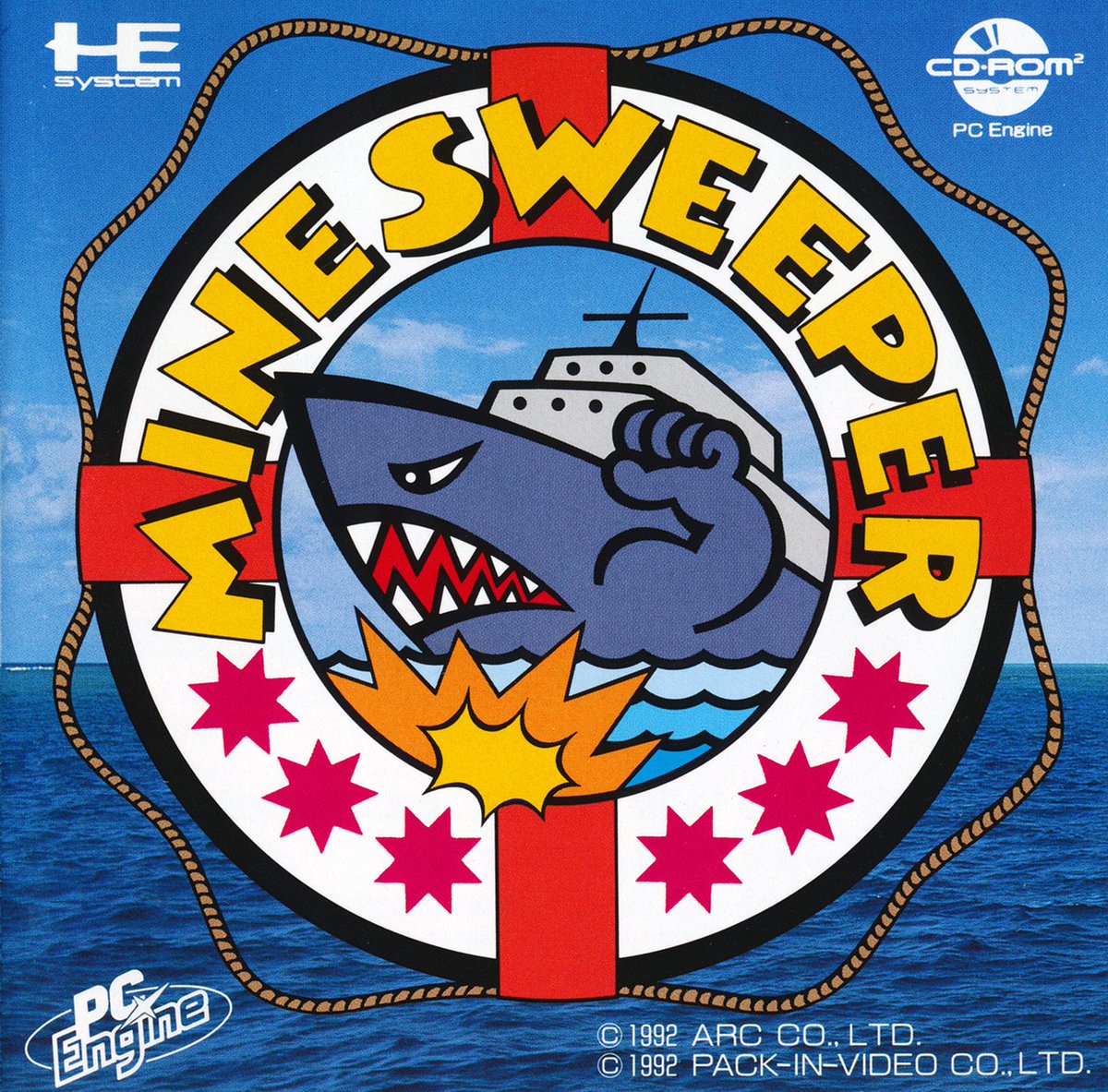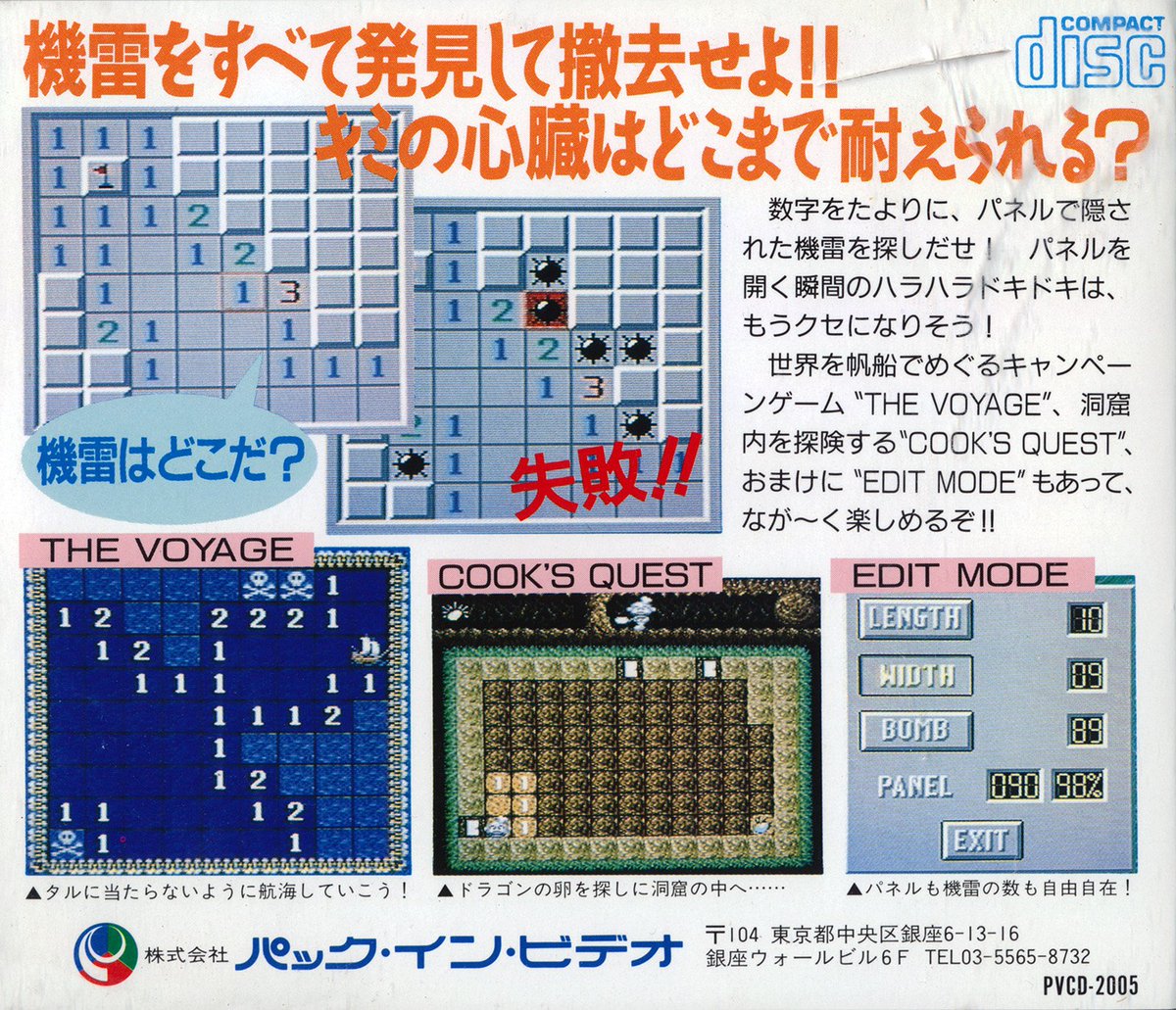So I'm going to start this THREAD of my personal favorite games from every platform I can think of through history that I have experience with.
These aren't necessarily the best games, just my favs for whatever reason.
I'll periodically update for fun when I feel like it.
These aren't necessarily the best games, just my favs for whatever reason.
I'll periodically update for fun when I feel like it.
These will start semi-chronological based on platform release date, but I'm sure that will unravel soon.
Ok so this ones fun. The Computer History Museum has a working PDP-1, and I actually got to play Spacewar on original hardware while chatting with Slug Russell, creator of the game. Pretty sure this is my fav PDP game as it's pretty much the only one I've played!
Spacewar is a two player competitive shooter from the early 1969s and easily the oldest game I've played on original hardware.
I've fooled around several times with the Fairchild Channel F, but don't have a real favorite game on that platform. However, 1976 is also the year the S-100 bus really started to take off, which eventually led to my favorite CP/M game, Aliens, which I experienced on Kayoro.
Aliens was cool because most CP/M machines couldn't pull off graphics, but Aliens used characters in clever ways to make a completely passable Space Invaders clone.
Ok now we are at 1977... what a year. 4 huge game platforms arrive: Apple II, Atari 2600, TRS-80, and Commodore PET.
Because I love being granular, I'm gonna make one pick now for the Apple II, and one later for the revised Apple IIe B hardware with double-high res graphics.
Because I love being granular, I'm gonna make one pick now for the Apple II, and one later for the revised Apple IIe B hardware with double-high res graphics.
And my favorite 48K Apple II game is... Ultima III! Exodus was a mind-blowing take on RPGs when it came out, with big parties, tons of spells, huge character customization options, top down overworlds, 3D dungeons, and a really cool mystery to solve. Thanks @RichardGarriott !
I ALMOST picked Lode Runner, which is also a mind-blowing game, but I just love Exodus so very much.
What about the 2600? Easy. Adventure. We call a lot of things genius as hyperbole. But Adventure is an actual work of genius. Everything we do in modern action/adventure videogames to interact with items, monsters, puzzles, & environments stems from Adventure.
As for the Trash 80, for such a limited system, it actually had a ton of great action games, especially the stuff from Big Five. But my fav is barely a game... it's Eliza, the AI therapist who's an early ancestor of Siri. I spent hours as a kid talking to Eliza. Image: mobygames
And as for the PET? I haven't done a lot of PET gaming except in emulation samples and some Space Invaders clones and Blackjack, so no real favs, although there's some interesting stuff like Bat and Dungeon.
Okay on to one of my all-time favs, the Atari 800 computer. Atari 8-bit was just such a cool platform that suffered from terrible marketing and awful dev support policies from Atari. It was AMAZING hardware with innovations like a GPU, sound chip, and a pre-USB universal bus.
The 800 was a superb gaming platform in terms of graphics capabilitues, but my fav Atari 800 game is hardly the flashiest or even the deepest. It's Archon, one of the best 2 player games ever made, & still a riot to play today. It looks like chess but it's actually an action game
Since we're approaching the Golden Age of arcades, jumping ahead in time a bit to my all time fav arcade game: Robotron 2084. Still the best twin stick shooter of them all.
Next up: Odyssey 2. Not a lot of great games on this platform... some good ideas and interesting experiments, but just not much that's fun. A glorious exception: Killer Bees! A really original, smartly-designed arcade style game that's not quite like anything else. Frenetic.
Woo hoo! Intelligent Television! Now we're talking. The Intellivision has a truly suoerb library of games. My fav is Shark! Shark! It's a cool premise... eat fish that are smaller than you, avoid fish that are bigger than you, grow, and rule the ocean.
Things start to really accelerate around 1980, as everybody and their mother releases a computer at the same time.
First up: the Tandy Color Computer, a weird little machine built around a 6809 processor. Not to be confused with the incompatible TRS-80 Model 1.
First up: the Tandy Color Computer, a weird little machine built around a 6809 processor. Not to be confused with the incompatible TRS-80 Model 1.
There's also TRS-80 Model 2 (which is also incompatible with both the CoCo and Model 1) but it was mostly a business computer with very few games.
Later there was a TRS-80 Model 3 (compatible with the Model 1 but not the Model 2 or CoCo) and a Model 4 (1 & 3 compatible).
Later there was a TRS-80 Model 3 (compatible with the Model 1 but not the Model 2 or CoCo) and a Model 4 (1 & 3 compatible).
Further complicating things, Radio Shack also eventually created 3 different CoCos. Oh Radio Shack, you scamp!
If you're not lost yet, the CoCo 1 & 2 were mostly similar. The CoCo 3 was MUCH more powerful, but also backward compatible with 1 & 2.
If you're not lost yet, the CoCo 1 & 2 were mostly similar. The CoCo 3 was MUCH more powerful, but also backward compatible with 1 & 2.
So, since I like being granular, I'll pick one fav game for the CoCo 1/2, and another for the CoCo 3 later on.
And my fav CoCo 1 & 2 game is... the completely unsurprising Dungeons of Daggorath.
The CoCo had a lot of solid little arcade clones, but DoD is a standout exclusive.
And my fav CoCo 1 & 2 game is... the completely unsurprising Dungeons of Daggorath.
The CoCo had a lot of solid little arcade clones, but DoD is a standout exclusive.
It LOOKS like a turn based RPG, but it's really more of an action hybrid. It's played in real-time, & there's a ton of depth and it's SUPER stressful. You don't have HP, you have a heartbeat sound effect, & if you do things too fast it speeds up. Too much & you die. It's awesome.
It's probably the best known CoCo game, but there's a reason for that... it's truly original and a blast to play.
Meanwhile, in England, Sir Clive was creating cheap, mass market computers. The ZX80 wasn't much of a gaming platform, but the SLOW mode imprvements I'm the 81 allow for some pretty neat stuff. Its US equivalent, the Timex Sinclair 1000, relied a lot on UK games.
My Sinclair experience is through emulation. I've tried a lot of the platform's games and I'm always amazed how much devs squeezed out of a computer that had a minimal 4 chip design. My fav is 3D Monster Maze, which is genuinely harrowing and also features this awesome dinosaur.
I have nothing to say about the APF-MP 1000 or the Coleco Telstar Arcade. And I don't have a favorite Microvision game.
The Acorn Atom is a big hole in my experience, but the successor, The BBC Micro, is home to one of my all-time favorite video games: Elite.
No favs on the Cassette Vision or Super Cassette Vision.
Been jumping around a bit so let's slide back to 1981 and two of the best 8-bit gaming computers: the Commodes VIC-20 and the Texas Instruments TI-99/4A.
BTW, interesting how many gaming platforms from this era are bespoke PCs! So many different kinds of computers coexisted!
BTW, interesting how many gaming platforms from this era are bespoke PCs! So many different kinds of computers coexisted!
Ok so the VIC-20 was pretty much a gaming console with a good keyboard. Theoretically it was a low-cost computer, but most folks used it to play games and program in BASIC.
Great library with a solid port of one of my favorite arcade games: Omega Race. But the winner is Jeff Minter's Attack of the Mutant Camels (Matrix: Gridrunner 2), a shooter 100x more awesome than its name. Weirdly, it's one of 2 games by Minter named Attack of the Mutant Camels.
As for the TI99/4A, it was a weird, interesting home computer with a bizarre (but sometimes powerful) architecture crippled by draconian software licensing policies. But it got some great games before Commodore ate its lunch, including a damn great port of Q-Bert.
Around the same time, the Connecticut Leather Company decided it would be a good idea to create a home console, and somehow stumbled into creating the shockingly-competent Colecovision, a very capable game machine that was especially adept at contemporary arcade ports.
The Colecovision was built around proven, off-the-shelf parts and buoyed by one of the most mind-blowing pack-in games of all time, a technically impressive Donkey Kong that looked closer to an arcade game than any home console game had before. But that's definitely not my fav...
For my money, the best Colecovision game is Space Panic, an arcade port that's way more fun than the original version. The port's pacing, control, & widescreen aspect ratio improve what's an otherwise middling arcade platformer. It's pretty much a slower, timed Lode Runner.
It's frustrating at first but once you get good it's super addictive.
Alright, let's talk IBM. In 1981 the Model 5150 (i.e. the IBM PC) hit the market and quickly established utter market dominance over business computing. But the folks at IBM also made a crappy 4 color graphics card (the CGA adapter) for the PC, and that meant GAMES!
Ok so if you plugged it into a TV instead of a monitor you could also get 16 colors, but then you gave up the 80 column display most productivity software defaulted to so that didn't get used as much. Also there's a cool secret 16 color mode we'll get to later.
Again, I like to be granular, so we're gonna have several sub-categories of PC games:
PC Booter - These games bypassed DOS. You booted straight from the game disk to save resources & get more direct access to the hardware.
PC Jr/Tandy 1000 - Special gaming hardware arrives!
DOS - Games that booted from the OS.
Windows - We'll get there later.
Linux - Likewise.
PC Jr/Tandy 1000 - Special gaming hardware arrives!
DOS - Games that booted from the OS.
Windows - We'll get there later.
Linux - Likewise.
The IBM PC really wasn't built for gaming. PC Booter games used every trick in the book to squeeze more performance out of hardware that was designed to drive spreadsheets, not graphics. The results were mixed, but there were some pretty incredible Booter games.
So I'm gonna sabotage this category by picking a Booter game so small that it fits in the minute 512 byte sector of a 1.44 MB floppy disk. There are actually several of these and I didn't know about them until I learned about Nanochess while studying chess history...
...but now I'm hooked. A 512 byte game. That's 512 letters of source code for the whole game.
There are a few of these that are really amazing; a pseudo-Roguelike, a sorta Oac-Manz a Tetris clone, a Chess game (no castling), Flappy Bird, but my fav is the colorful Invaders.
There are a few of these that are really amazing; a pseudo-Roguelike, a sorta Oac-Manz a Tetris clone, a Chess game (no castling), Flappy Bird, but my fav is the colorful Invaders.
It's unfathomable that this exists.
Moving on to PC Jr/Tandy 1000... so after the PC, IBM made a "home" computer with specialized graphic and sound capabilities aimed at games. Trouble is, they artificially crippled it to avoid competing with the real (and more lucrative) PC, and nobody bought it.
(Side note, this used to happen quite a bit with old computers... Apple did the same thing with the Apple IIgs to keep it from competing with Mac, effectively dooming the promising IIgs).
Fortunately, Tandy, never content to have fewer than 78 simultaneous types of incompatible computers on sale at the same time, swept in, copied the PC Jr tech, fixed the problems, improved the upgrade paths & compatibility, & wrapped it up at a rock bottom price. The Tandy 1000.
The 1000 series changed computing, bringing the PC standard into homes through thousands of Radio Shack stores, selling shiny new versions of slightly "last gen" hardware at such low prices that people who'd previously avoided PCs and clones simply couldn't resist.
And compared to the PC, the Tandy 1000 series was very good at contemporary games in the mid-late 80s, especially with an available DMA add-on. And my favorite Tandy 1000 game? The glorious 16 color Maniac Mansion port. For many people, MM was a C64 game. But for me, it was Tandy
BUT now we're getting ahead of ourselves. We'll talk more PC & DOS later. For now, let's hope back to 1982 and talk about the best selling home computer of all time...
THE COMMODORE 64!!!
It was the perfect meeting of price, performance, timing, & marketing. Who cared if it broke all the time, if the floppy drive was slow, if support was non-existent?! It was cheap, you could do real work on it (home word processing, spreadsheets, Print Shop) & it could PLAY GAMES
They sold a ton of these in the US and an absolute bajillion in Europe. Sixteen colors, great scrolling support, and hardware that was very versatile in the hands of a capable game programmer. Early games came on cartridge or cassette tape, but in the US, disks quickly took over.
There are so many thousands of C64 games that picking a favorite is especially hard, but in the end, my fav is a freeware type-in assembly language game from Compute magazine - Crossroads 2: Pandemonium, which is kind of like Wizard of Wor if it moved at the speed of Robotron.
The C64 is capable of incredible beautiful graphics, but for my money, nothing matches the gameplay of Crossroads 2.
Although wow there are some gorgeous games on this box, check out Mayhem in Monsterland.
Although wow there are some gorgeous games on this box, check out Mayhem in Monsterland.
No one has ever enjoyed playing a game on an Atari 5200 because the controllers are truly awful, but thanks to emulation we can enjoy Space Dungeon, an arcade port that's great because
1. It's called Space Dungeon
2. It's a Zelda I dungeon but also a twin stick shooter in space.
1. It's called Space Dungeon
2. It's a Zelda I dungeon but also a twin stick shooter in space.
Across the pond, Sir Clive was at it again with the super cheap Spectrum computer. Again, my Specy exposure is mostly emulation, but there are a metric ton of awesome games on the diminutive little PC.
My favorite is the sadistic Cybernoid... a very weird little game. It's a SLOW shmup. It's a flip-screen shooter. In a weird way, it's almost a puzzle game, until all hell breaks loose. It's horrifyingly difficult & weirdly alluring, one of those "there's nothing like it" games.
You may have noticed I've not said anything about the Amstrad or Electron... I'm just not well versed enough there to have a real favorite. But I almost missed one of the most wonderful game systems ever, the Vectrex, a vector-graphics console with built in monitor.
The Vectrex is more than a gimmick... it has awesome aesthetics and most of the games are quite good. You can't really explain how great vector graphics look until you see them on a real vector monitor. They're unfathomably sharp and bright. They look incredible.
I've never played Vector Pilot, nor have I gotten to sample some other homebrews, so my choices are limited to classic-era games, but I think my fav Vectrex game is Scramble. The Vectrex's vertical monitor mirrors the arcade original, and the game just looks so good on motion.
Gotta try Vector Pilot tho. Looks incredible.
Now to another big hole in my experience: Japanese PCs. Japan had a huge range of distinct PCs in the 80s and early 90s, but my exposure to the breadth of their libraries is very limited. I don't really have a favorite PC 880 or 9800 game.
We'll get to the Sharp x68000 later, but for now let's talk MSX. I've spent enough time with MSX games to have some favorites, though I'm certainly not expert.
MSX was a computing standard that was popular in Japan... sort of the Japanese C64 in spirit.
MSX was a computing standard that was popular in Japan... sort of the Japanese C64 in spirit.
Since you know I love being granular, let's split MSX and it's more advanced but compatible successor, MSX 2.
So I don't really like racing games, but Penguin Adventure is fundamentally a racing game but you play as a sprinting penguin who sometimes get launched into outer space and eats fish in orbit. So that's awesome.
As for MSX-2, as much as I enjoy Metal Gear 2, the crown has to go to the terrific COMPILE shooter, Aleste 2. COMPILE makes incredible vertical shooters, and this one's a gem among gems. Sort of like a better Gun-Nac.
OK it's late and I'm sleepy, but I'll return to this thread and keep going... heck we haven't even TOUCHED Sega or the Famicom yet!
Ok, we're back. So not much to say about some other early Japanese PCs/gaming consoles. The X1 and SC-3000 are just outside my experience, and while I know some SG-1000 games, (which are a LOT like Colecovision games) I'm much more versed in the Mk 3 (i.e. Master System).
But for now let's talk about the baddest of the bad boys, ye olde Famicom.
You know I love to be granular, so we'll be breaking the FC up into three categories: Famicom, Famicom Disk System, and NES.
You know I love to be granular, so we'll be breaking the FC up into three categories: Famicom, Famicom Disk System, and NES.
I mean technically we could break them up even more by mapper, since Famicom/NES carts often contained expansion hardware in the game carts themselves. Like imagine you put a Blu-ray in a PS5 and it upgraded the GPU and added extra RAM. You could do that with game cartridges!
But we'll stick to the big three. So for Famicom, I'm gonna go with a JPN exclusive, because that's just more fun. Now you're probably expecting Joy Mecha Fight... but no! As much as I love it, JMF ain't it. Nor is it Hebereke or Gimmick (ok that also came out in like Norway)...
...nor is it Ganbare Dunk Heroes or an obscure RPG or even the mighty Crisis Force... no friends, my favorite FC game is Summer Carnival '92: Recca. I love shooters and Recca is just bonkers. It's almost too much. But I adore it. If you want to know why, it's on 3DS. Try it.
As for the Disk System, let's talk about that sweet sweet Vs. Excitebike, which is pretty much just two player Excitebike. Also, because it's a disk game, the track editor actually works and saves. Awesome.
And the NES? Well, its home to my all time favorite game, a port: Rare's adaptation of Sid Meier's Pirates! which is originally a C64 game but is infinitely smoother and more playable on the NES. I have certainly played thousands of hours of this game over the last 30 years.
Why? Best sandbox game of the classic era. RPG complexity, action game simplicity, utterly open-ended, infinitely replayable.
With the American success of the NES, Atari dusted off its shelved 7800 tech and dropped a very interesting little console on the market. It didn't have a prayer against the NES library, but it was a good arcade port machine.
But my fav 7800 game is an exclusive: the bizarre Ninja Golf, which is a golf game but also a side-scrawling brawler but also a bonus stage from Shinobi. It's legit neat.
Not to be outdone by anyone but itself, Atari released a SECOND console around the same time, a repackaged 800 computer called the Atari XEGS. I LOVE the look of this thing.
The keyboard was optional, and the games were mostly old Atari 800 disks converted to cartridge. But since the Atari 800 was pretty awesome, the XEGS actually wasn't half bad... although it was underpowered next to the newer NES. Also, 1 button joystick 

I'm tempted to pick Rescue on Fractalus as my fave XEGS game just because they somehow crammed all that LucasFilm Games 3D goodness into a cart, but TBH my fav XEGS game is the same as my fav Atari 800 game: Archon. I love my Archon cartridge.
Oh but America we are not done yet. Let's talk Sega Master System.
And as much as I love being granular, I am NOT going to split Mk III/SMS versions around whether or not they included the FM synthesis chip. Some did, some did not.
And as much as I love being granular, I am NOT going to split Mk III/SMS versions around whether or not they included the FM synthesis chip. Some did, some did not.
What I AM going to do is pick fav US SMS game and favorite European exclusive, because our friends on the continent got some great games we didn't.
So I LOVE Ghouls n' Ghosts for the SMS... something about the limited (but not TOO limited) palette makes it look great, kind of like some EGA DOS games looked better than their VGA modes. But...
...the US champion is Penguin Land, an adorable and unique game about safely guiding an egg down a series of levels, a game where gravity is your ally one second and your enemy the next. Also I really like games about penguins.
As for Europe... ok, it's NOT an exclusive. Because you see, the SMS was also HUGE in Brazil, and a lot of great Master System games were shared between the EU and Brazilian markets. And while I'm tempted to pick Ninja Gaiden or one of the Atari ports...
...my heart lies with the weird, almost PC-esque port of Ultima IV: Quest of the Avatar, an oddly-playable console version of one of the most important CRPGs of them all. Ultima IV was the RPG that taught us the real friends were the morals we learned along the way.
Brazil also had a few true exclusives, many of which were 8-bit versions of 16 bit games the SMS simply couldn't handle, and also a lot of Disney games and the occasional Game Gear port. I've tried liking most of these but they are usually not good.
Japan does have one SMS exclusive I like: Woody Pop, which is kinda like Balsa Arkanoid.
I realize I have said nothing about the Bally Astrocade and the Arcadia 2001. There is a reason. I do not care.
What I DO care about is my first home computer, the ill-fated Coleco ADAM, an all-in-one, reasonably priced computer with an affordable printer included right in the box, built in word processor, & great gaming tech, which all sounds good except a huge number of them never worked
The ADAM could play Colecovision games, but it also had its own special Super Games that combined the Colecovision capabilities with the ADAM's larger storage and RAM.
My fav of these is Dragon's Lair, a really weird but very cool attempt to port an animated Don Bluth LaserDisc game to a computer that ran programs off what amounted to cassette tapes. And you know what? They kind of pulled it off.
But that's only the beginning. I'm gonna take another break, but next time, we begin with ATTACK OF THE 16-BIT COMPUTERS! It's Classic Mac, Atari ST, and Amiga time!!!
We're back! Ok so before we hit the aforementioned 16-bit PCs, let's take a look at a couple of 8-bit computers I said we'd circle around to... the Apple IIe and the Tandy CoCo 3.
So the Apple II was active in some form or another from 1977 to the early 90s. Each main Apple II version had some common archetechtures or backward compatibility, but also had a distinctive leg up on previous iterations.
Additionally, most Apple IIs had a large number of expansion slots, with first and third party add-ons that could bring old Apple IIs closer to parity with newer versions depending on configuration. Plus you could also upgrade motherboards on most models.
So in addition to the base Apple II, II+, IIe, IIc, and IIgs iterations, you had a lot of hybrid frankenstein versions cobbled together by owners to make their Apples better at what they wanted to do with them. And even the best versions changed over time.
Faster processors, more RAM, 80 column boards for better word processing, RAMdisks (RAM masquarading as a sort of fake high speed floppy disk), and even two different iterations of the IIe motherboard, one of which doubled the resolutions available for games & added more colors.
The Apple II was largely mismanaged by Apple from the late 70s to early 80s, as sections of the company were more inured with the business potential of the ultimately disastrous Apple III, the innovative but expensive Lisa, and the long-awaited Mac.
But the Apple II was such a solid, versitile, reliable, and customizable design it just kept selling. Eventually Apple noticed that & created the IIe, e for Enhanced.
The IIe standard started at 64k but evolved into a 128k machine with 80 column text & double high res graphics.
The IIe standard started at 64k but evolved into a 128k machine with 80 column text & double high res graphics.
It was the school computer of choice in America and also very popular in homes, public libraries, etc.
It was also home to some sweet games.
I'm going to pick 2 favs, one for the Rev A board & one for the 128k Rev B with double high res graphics.
It was also home to some sweet games.
I'm going to pick 2 favs, one for the Rev A board & one for the 128k Rev B with double high res graphics.
My 64k choice will run on any 64k Apple II, including a II+ with language card, but being a 1985 release it's squarely targeted at the IIe. It's MECC's 85 version of The Oregon Trail, which is the definitive version of a superb educational game.
My Rev B/128k choice barely makes use of the expanded DHR palette and resolution, but it sure makes amazing use of the RAM. That's Prince of Persia, which makes an Apple IIe's 1977-based hardware do things no computer with a 1 MHz processor should be able to do.
Beyond the incredible technical merits, PoP is a terrific exploratory adventure game that demands creativity, skill, and some infuriating trial & error, but never enough to make me give up. Plus great in-game cinematic storytelling and cool mysteries like the mirror clone.
Now to the CoCo 3. So Tandy really liked making new computers. At one point in history you could walk intoRadio Shack & buy
A TRS-80 Model IV
A TRS-80 Model II
A CoCo 2/3
A Tandy 1000 series
A Tandy 2000
ALL of these were distinct incompatible computers made by the same company
A TRS-80 Model IV
A TRS-80 Model II
A CoCo 2/3
A Tandy 1000 series
A Tandy 2000
ALL of these were distinct incompatible computers made by the same company
And that's not counting the portable (and excellent) TRS-100!
So the CoCo 3 was Tandy's last 8-bit PC, and it was a doozy. Backward-compatible with the CoCo 1/2, it supported 512k RAM & 16 color high res graphics around a 6809 processor. From an 8-bit perspective that's a beast.
So the CoCo 3 was Tandy's last 8-bit PC, and it was a doozy. Backward-compatible with the CoCo 1/2, it supported 512k RAM & 16 color high res graphics around a 6809 processor. From an 8-bit perspective that's a beast.
Unfortunately it existed in a weird price gap where when you added up the disk drive, high-res monitor, OS/9 operating system, etc, you could pretty much just buy a low-end Tandy 1000 for the same price and get access to way more software from the established PC library.
So the CoCo 3 just never got the software support to take advantage of its glorious potential. It this became something of a cult PC, with some genuinely fascinating homebrew and small-studio applications & games.
The most interesting of these is what amounts to an assembly language port/emulation of arcade Donkey Kong running on CoCo, an engineering feat that's so incredible that at first I thought it wasn't real. But it is. By virtue of its improbable existence, it's my fav CoCo 3 game.
Ok so let's talk 16-bit computers. Britons, rejoice.
So while we American kids were all blazing away with our NESes and putting along with our Tandy 1000s, Europe was rapidly adopting some pretty damn amazing gaming hardware: the Atari ST series and the Commodore Amiga series.
Atari was an American company, but for reasons we won't get into here, they weren't the toast of the US computer market by the mid-80s. So when the invented the genuinely-amazinh Atari ST and launched it, the US reception was lukewarm. But in Europe, people paid more attention.
The ST was amazing. It was pretty much a Mac, but with color and much cheaper. It could have been a pretty capable business computer if it had ever gotten a shot, but was mostly a niche PC except for music (it had a MIDI port) and games. It really was next-gen when it hit shelves
But of the ST was amazing, the Amiga was ASTOUNDING. It was more expensive than the ST, but still reasonably priced, and it could do things with graphics the ST couldn't touch. It really could have been a great business machine, but between Commodore's woes & PC dominance...
...it was mostly a video/graphics workstation platform. And again, games.
I have very mixed feelings about the ST and Amiga. One one hand, they are awesome. On the other, they have one-button joysticks, which is a crime against nature. Why, Europe? Why do you press up to jump?!
I have very mixed feelings about the ST and Amiga. One one hand, they are awesome. On the other, they have one-button joysticks, which is a crime against nature. Why, Europe? Why do you press up to jump?!
Despite this sin, I adore both platforms. There are a bajillion great games on both. My favs?
Look, y'all, you're not going to find a lot of surprises here. Some games are super popular and well remembered precisely because they were so damn cool.
Look, y'all, you're not going to find a lot of surprises here. Some games are super popular and well remembered precisely because they were so damn cool.
As tempted as I am to rant about the Hero Quest board-game-to-PC port, I'm going to have to go with Dungeon Master for ST. It's atop most ST lists for good reason: it's a truly slick & well-designed 3D dungeon crawl that understood how a mouse-driven UI was a game changer.
And Amiga? It's not the best Amiga game by far but it's my fav: Moonstone, a weird, bloody multiplayer action-strategy game that I only learned about a few years ago through a game developer I met in Sweden. It's WILDLY imperfect, I'm not even sure it's good, but it's amazing.
But wait! What about the olde Macintosh you ask?!
It is not forgotten.
The Mac was never much promoted as a game platform early on, but it's high-res screen, early mouse interface, and Hypercard combined to make it a pretty fertile playground.
It is not forgotten.
The Mac was never much promoted as a game platform early on, but it's high-res screen, early mouse interface, and Hypercard combined to make it a pretty fertile playground.
You know I like being granular, so we're gonna divide Macs up a bit:
x68k B&W Macs
x68k Color Macs
Power PC Macs
Intel Macs
Right now we're just gonna talk about the classic x68k mono Macs.
x68k B&W Macs
x68k Color Macs
Power PC Macs
Intel Macs
Right now we're just gonna talk about the classic x68k mono Macs.
That 512 by 384 resolution (196,698 pixels) really was impressive back in the day. Even without color, you could accomplish a shocking amount with dithering. When the Mac came out, a C64 game was usually 160 by 200 res (32,000 pixels), a PC game maybe 320 by 200 (64,000 pixels).
So you could make some pretty gorgeous stuff.
Hence my dilemma. See, I think the BEST early Mac game is Balance of Power, which is truly amazing and takes great advantage of the Mac mouse, but isn't visually impressive. And as much as I like it...
Hence my dilemma. See, I think the BEST early Mac game is Balance of Power, which is truly amazing and takes great advantage of the Mac mouse, but isn't visually impressive. And as much as I like it...
...I actually think my fav is SimEarth, mostly for the memory of banging away for endless hours in my school library on an ancient SE/30.
And that circles us back to yet another Apple II... the 16-bit Apple II. That's right, Apple made a 16-bit member of their original computer family. It was backward compatible with the 8-bit line thanks to an awesome custom CPU (a cousin of which ended up in the SNES!).
The gs in Ape IIgs stood for "graphics and sound" and they weren't kidding. The IIgs could create really lush imagery and lovely sound. But Apples was scared the IIgs would eat into lucrative business Mac sales, so they crippled it by massively underclocking the CPU.
It's a shame... in an alternate universe where the IIgs had a bit more RAM at launch and a faster processor, it might have been a big success. As it was, it kinda became a weird thing sold to schools to replace Apple IIes as they wore out.
So my fav? It's hard. Most good games on IIgs ended up on other platforms pretty quick, and I'm not well versed in hidden gems. It's the original home of The Immortal, which is extremely original but just brutal to play. So I'm gonna say...
Rastan! It's a port of a very shallow arcade game about walking stiffly and stabbing things, but the port quality is actually pretty stellar and for some reason I can't explain, I really dig Rastan. I can't qualify it. Maybe it's the Taito arcade vibe. I love Taito.
Ok so that's a good start on 16-bit computers, we haven't hit the x68000 yet. Also we completely slipped 8-bit oddities like the C-16 and Plus/4. We'll get there. But for now it's late and time for another break. I'll be back soon.
The thread lives on. When last we left, we were still bouncing around in 8 and 16 bit computer land. And while I'm considering writing an idea to the Commodore 16 and the x68000, I want to talk about DOS for a second.
So ye olde Microsoft Disk Operating System (MS-DOS) was the backbone of the PC-compatible hardware standard that dominated American business computing in the 1980s and continues to do so to this day.
The original IBM 5150 ran on DOS. It was the first of a hardware lineage that continues to define many of the capabilities and design choices behind most modern computers. Mostly created from off the shelf parts, it was quickly reverse-egineered and widely copied.
Those "clones" spread like wildfire, and thanks to Tandy (earlier up the thread) PC-compatibles became a growing standard not just in US businesses, but in many US homes. I had a couple at various times.
When computers get popular in a home, games will surely follow.
But the IBM PC REALLY wasn't designed around great game support. It had a lot more capability for making spreadsheets than a C-64, but not so much in regard to, say, sprites, music, or smooth scrolling.
But the IBM PC REALLY wasn't designed around great game support. It had a lot more capability for making spreadsheets than a C-64, but not so much in regard to, say, sprites, music, or smooth scrolling.
You may remember that we talked earlier up the thread about PC-Booters. These were game disks designed to help mitigate the weakness of PC hardware by bypassing DOS and going straight to hardware to utilize special tricks and machine language sorcery.
But as time passed, most games moved to DOS where they could take advantage of common low-level software controls provided by the OS. And those are the games we're gonna talk about.
You know we like being granular, so we're picking a favorite for each major discrete hardware structure supported by DOS in the early-late 80s.
We already covered PC Jr/Tandy 1000 16 color games above.
That leaves...
We already covered PC Jr/Tandy 1000 16 color games above.
That leaves...
-CGA
-CGA special trickery mode bonus game
-EGA
-VGA
We'll do SVGA, XGA, etc later. Not gonna bother with Hercules or MCGA.
-CGA special trickery mode bonus game
-EGA
-VGA
We'll do SVGA, XGA, etc later. Not gonna bother with Hercules or MCGA.
CGA - The original Color Graphics Adapter. Your choice of 4 terrible colors at 320x200 controlled by a whopping 16k of video memory.
No good games to be found there, right?
No good games to be found there, right?
WRONG! Some great stuff, including one of the all-time greats, Adventure Construction Set.
For many people, ACS was an Apple or C64 thing. And I did use it on Apple. But ACS was also a DOS game for me.
For many people, ACS was an Apple or C64 thing. And I did use it on Apple. But ACS was also a DOS game for me.
This game was unreal. It allowed you to build Ultima-style RPGs of surprisin g depth with ridiculous control pretty much everything. If you wanted to make a reasonably-scaled, tile-based RPG, you could do it and have fun doing it. You could then share games with your friends.
It was accessable, versatile, and fun. And it was so, so ugly in CGA. Let's use the box art instead.
But that's not my only CGA choice because... UNDOCUMENTED CGA mode alert!
So you could do several clever things with CGA if you were clever, like create 16 colors games for TV output. But my fav is this weird other 16 color low-res mode.
So you could do several clever things with CGA if you were clever, like create 16 colors games for TV output. But my fav is this weird other 16 color low-res mode.
CGA was usually 4 color 320x200, but this mode was only 160 x 100, exactly 25% of normal resolution. And that led to some very colorful, creative, and CHONKY games!
My favorite of these DOS delights is Round 42, which I picked up decades ago on some compilation floppy. Round 42 is this very fast, slick, and creative shooter with a homing laser mechanic that drives you forward at a furious pace. Round 42 rewards the AGGRESSIVE.
There were actually quite a few other games that used this weird mode to squeeze more color out of a CGA card back in the day. And the modern homebrew creation Paku-Paku shows just how good it can look. Plays great too.
So I planned to burn into EGA and VGA tonight, but I'm calling asleep so I'll pop back into the thread soon.
The THREAD continues! Let's talk EGA.
So you may remember a while back we talked about the failed IBM PC Jr. and its EXTREMELY successful clone, the Tandy 1000 line. Tandy computers had 16 color graphics, a big step up from the old 4 color IBM PC standard. But they weren't the only 16 color graphics in town.
IBM experimented with several graphics standards, some widely adopted and some less so. One of the more widely adopted was EGA, IBM's Enhanced Graphics Adapter standard for PCs.
EGA cards actually varied somewhat in their capabilities, but by and large they delivered a 16 color, 320x200 experience. A lot of games that supported Tandy graphics also supported EGA.
The EGA palette had a very bright look to it, so much so I often prefer it to the more advanced VGA.
My fav EGA implementation is probably Pool of Radiance, the AWESOME AD&D Gold Box tactical RPG/dungeon crawl.
My fav EGA implementation is probably Pool of Radiance, the AWESOME AD&D Gold Box tactical RPG/dungeon crawl.
Even more advanced was VGA, which had several modes. The most widely used in games was 320x200x256 colors, though there was also a sharper but less colorful 640x480x16 color mode.
A LOT of very popular games were proper VGA standard, but for me, the original CIV was kinda peak VGA both in terms of graphics and gameplay. The blocky colors just JUMP out at you. And the gameplay? I mean, it's Civ, so pretty much perfect.
AFter VGA standards began to branch a bit, and we're not going to get into the history of XGA and Super VGA and all that. We'll lump things together under Windows 95 later when we leave DOS behind. But I do want to make a quick shoutout to my favorite Win 3.1-native game...
Ski Free! Most Windows 3-era games switched over to DOS to free up system resources, but Ski Free was built from the bottom up for Windows, and it wasted dozens of hours on those slopes. The day I learned there was a speed-up key was an epiphany. Fuji Golf is a close second.
And honorable mention to Minesweeper, a game that's pretty darn underrated.
Ok so we're gonna leave computers behind for a while. I realize I'm skipping some (like the C128, the x68000, etc) and we may get back to them, but let's give dedicated gaming hardware another go, shall we?
Before we hit the dawn of the sixteen-bit console generation, let's shore up the issue of early handhelds. Self-contained, cartridge-swappable handheld platforms go all the way back to the 70s with MB Microvision. And there are obscurities like the Epoch Game Pocket Computer.
I don't have favs for either of these, and since this is theoretically a thread about favorite games, moving on to the original handheld trinity, three portable game systems that were released relatively close to one another: Game Boy, Lynx, and Game Gear.
Each of these had strengths. Game Boy had great durability and battery life and the power of Nintendo's incredible properties, dev teams, and marketing machine. Lynx had a ton of raw power, great color, and a switchable aspect ratio. Game Gear had SEGA panache and LOTS of colors.
Game Boy games use a 2 bit, 4 hue palette in shades of green at 160x144. That's an almost square resolution & much lower than the NES, which meant Game Boy games often had to make a choice: big characters with little room to move, or small sprites with more playfield.
Nintendo engineers and third parties eventually managed to do INCREDIBLE things with the extremely limited Game Boy hardware. There are a ton of great Game Boy titles across many genres, but I always keep coming back to two games.
The first is a MIND BLOWING implementation of Ninja Spirit, an arcade game that has simply no business being successfully ported to Game Boy. I am convinced there is a small sliver of plutonium in every Ninja Spirit Game Boy cart powering the graphics. Stills don't do it justice.
But as much as I love Ninja Spirit, it's Donkey Kong 94 that ultimately wins my heart on Game Boy. Action/puzzle/platforming at it's best. Mario is agile, 100 levels are fairly designed, the difficulty curve feels natural, and the game is simply top-notch. It's an all-time great.
Now, let's talk Lynx. Poor Lynx.
I have a LOT of fondness for Lynx in my heart. Under better management and with better timing, it might have taken the world by storm. Originally designed by folks it Epyx, it was eventually eaten by Atari and cast into the world half-baked.
It was REALLY powerful for the time in terms of raw processing capability. It was cleverly designed to be rotatable, so you could easily play games in a vertical or horizontal aspect ratio just by turning the unit. D-pad and buttons fit under your fingers naturally either way.
Lynx color was solid and had a very large available palette when utilized correctly, and the backlit screen looked startlingly good for the time. It's weird low 160x102 resolution actually worked in its favor at times, giving games a distinct, blocky and consistent vibe.
But Lynx had three fatal weaknesses. First, it ate batteries like a starving man set loose upon a Golden Corral buffet. Second, it launched VERY expensive, like twice the price Game Boy. And third, it just didn't have the software.
In an era where Konami, Capcom, Nintendo, and other devs were at their prime, Atari was forced to largely rely on support from their own publishing label, Epyx, and other creators that at the time just couldn't compare to what Game Boy was getting.
There are a number of good games on Lynx, but just not enough. Battlewheels is cool, Lemmings is pretty impressive, and several of the Atari arcade ports are pretty neat. I'm especially fond of RoadBlasters.
Rampart is pretty darn good too, and probably JUST edges our Road Blasters in my affection. I'm also a fan of the officially-unreleased Lode Runner port, which with more polish might have been great. As it stands it plays a tad too fast.
Alas, Lynx just never really got it's feet under it. Too many of the games were slow and way too zoomed in, which made for awesome box shots but terrible game play... see the Double Dragon port. There's NO WHERE to move! This was a common problem in early handheld gaming.
Now to Game Gear. It combined the resolution of the Game Boy with the color of the Lynx. It ate batteries almost as fast as Lynx did, but it had pretty much the same innards as a Master System, albeit with a much lower-res 160x144 screen than the home system.
That would have been no problem had the software devs for Game Gear regularly built their games around the screen's size limitations, but unfortunately this rarely happened. Game Gear seemed determined to leverage its visible graphics advantages in marketing... at any price.
That meant that too many games were built around big sprites in small spaces, creating a lot of games that looked great but played, well, not great. The general "its for little kids" attitude around handheld gaming that was prevalent at the time didn't help either.
I mean, if you saw this screen shot in the early 90s and someone told you THIS IS A HANDHELD, and you compared that to Game Boy's pea soup colors, you might be so dazzled you overlook that when Sonic is this big and fast on a tiny screen he's almost uncontrollable.
But there were some gems on Game Gear. My favorite is an EXCELLENT, stylized port of Streets of Rage 2, which sacrifices visual detail for screen real estate. It commits to being colorful, fast, and faithful to the feel of the original, and delivers on all counts.
"BUT JARED" you are thinking, "WHAT ABOUT NOMAD AND TURBO EXPRESS?!" We will get there!
There are so many possible paths to follow now! Do we return to the 128k version of the Spectrum? Do we start talking about color Macs? NO! My friends, it's about time for us to hit that SWEET 16 BIT HOME GENERATION. But... it's late! So taking a break. We'll do that next time!
Thanks for reading. See you back here soon.
The thread is back! Let's talk 16-bit home game systems, starting with an 8-bit/16-bit hybrid, the Turbografx-16/PC Engine. It runs on a super-hyped up version of the 6502 tech behind the Apple II, Atari 2600, C64, and NES, paired with dedicated 16-bit graphics hardware.
It's my favorite 16-bit console. There's this flat, newspaper comic, cartoon-like quality to so much of the game art on this system.
Since we love to get granular around here, I'll be picking several favorites spread across the different iterations of the PCE hardware.
Since we love to get granular around here, I'll be picking several favorites spread across the different iterations of the PCE hardware.
I won't be doing them all, because the PCE has SO MANY variants. It was a sort of upgrader's dream/nightmare, with customizable plug-ins allowing for a dizzying array of configurations, each supporting different games.
We'll be covering favorite:
TG-16 HuCard
TG-16 CD-ROM
TG-16 Super CD-ROM
PCE HuCard
PCE CD-ROM
PCE Super CD-ROM
PCE Arcade CD-ROM
SuperGrafx game
TG-16 HuCard
TG-16 CD-ROM
TG-16 Super CD-ROM
PCE HuCard
PCE CD-ROM
PCE Super CD-ROM
PCE Arcade CD-ROM
SuperGrafx game
Yes, there are that many different types of PCE game.
First, there were carts (HuCard).
Then a CD plugin.
Then, they did this clever thing using the cart slot to let you upgrade the capacity of your console with more RAM/upgraded instructions to run ever-more-advanced CD games
First, there were carts (HuCard).
Then a CD plugin.
Then, they did this clever thing using the cart slot to let you upgrade the capacity of your console with more RAM/upgraded instructions to run ever-more-advanced CD games
Reading this, you are perhaps beginning to understand why this is the most Jared-ass console ever created.
And I haven't even begun with the Turbo Express handheld, the LT pseudo-laptop, the Laser Active hybrid, etc. We'll keep to the basics.
And I haven't even begun with the Turbo Express handheld, the LT pseudo-laptop, the Laser Active hybrid, etc. We'll keep to the basics.
So. Favorite TG-16, American release HuCard? I am SO tempted to say Devil's Crush, the awesomely-Satanic pinball game, but in the end, it's Bomberman 93, which just oozes with peak Bomberman style and substance. Hudson cooperated with NEC to create the TG-16, and in B93, it shows
The first-gen US CD library is pretty anemic, but we got a few good ones. Monster Lair is dope, but there's a reason you always hear about Ys I & II. It's a really loving port of a very good action RPG and it's the best early CD game to make it stateside.
Super CD fared a little better in the States. For my money, peak US PCE is Gate of Thunder, the pack-in for the Turbo Duo. It's a superb horizontal shmup. Lords of Thunder gets all the love for the awesome metal soundtrack, but Gate is a way better game.
My PCE HuCard fav is a dark horse.
I love 1943. It's one of my all time favorite video games. And 1943 Kai on PCE is my favorite version of that game. Why?
Cause it's awesome. I dunno. Words fail me. It's just a superb, balanced, non-bullet-hell vertical shooter.
I love 1943. It's one of my all time favorite video games. And 1943 Kai on PCE is my favorite version of that game. Why?
Cause it's awesome. I dunno. Words fail me. It's just a superb, balanced, non-bullet-hell vertical shooter.
I keep talking about HuCards, btw, as if everybody knows what they are. In case you don't, they're cool credit card-sized cartridges for the PCE/TG. In 1987 when the PCE hit Japan, they were like something from the future.
Next up: the first of THREE different BIOS/RAM card variants of the PCE CD system in Japan. A LOT of games came out on PC in Japan, so narrowing this down is kinda tough.
Master of Monsters is super-tempting... it's shades of chess, Archon, and FF Tactics rolled together into a compelling strategy game. And I really adore Super Darius. But I'm going to disappoint you. My favorite pick is very dumb.
No, I'm not kidding. Somebody looked at the exciting new world of CD-ROM technology allowing unparalleled sound, graphics, video, and storage size on a home console and said, "you know, that would be a great place to port a dedicated version of that time killer in Windows."
It's one of the first PCE games I ever bought. And it's sure is Minesweeper.
I love that this exists.
I love that this exists.
Next up, Super CD. This is where things get good. WAY to many games here to make a quick choice. Ys IV. Dungeon Explorer 2. Sapphire. Dynastic Hero. Gradius 2. Popful Mail. Some neat RPGs. But there's a reason people talk about Rondo of Blood with reverence. It's a masterpiece.
Also oops error above Sapphire was an Arcade CD, the pinnacle of CD upgrades on PCE.
So let's just make that my pic for Arcade CD game. Fatal Fury Special is good too.
I really should play Madou Monogatari someday. I love Puyo Puyo so a Puyo Puyo RPG sounds dope.
So let's just make that my pic for Arcade CD game. Fatal Fury Special is good too.
I really should play Madou Monogatari someday. I love Puyo Puyo so a Puyo Puyo RPG sounds dope.
Finally we have the SuperGrafx, the very short-lived ultimate PCE iteration. Easy choice. Ghouls & Ghosts. Really fun version.
That's enough for today. Next time: Genesis!
That's enough for today. Next time: Genesis!

 Read on Twitter
Read on Twitter